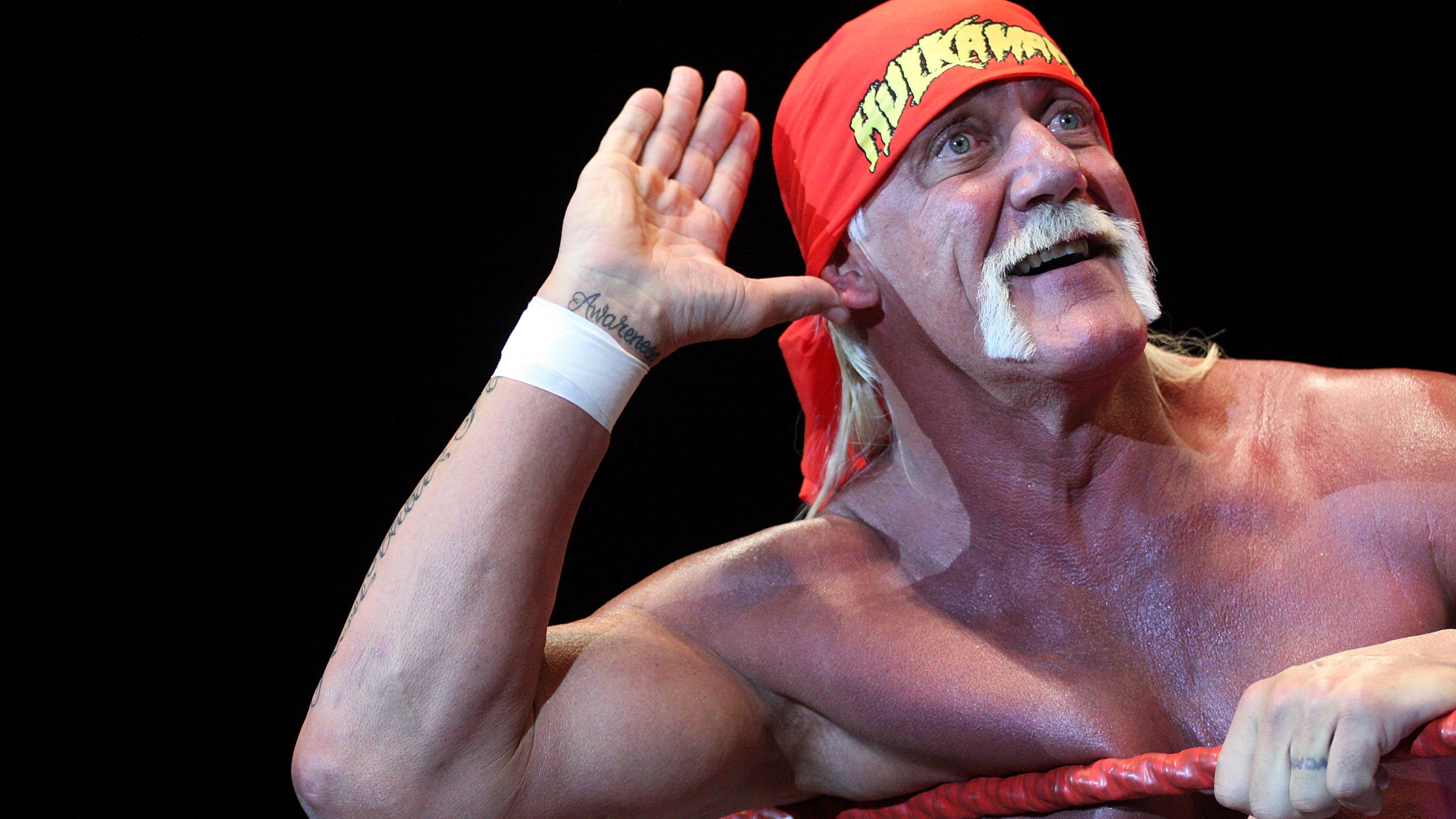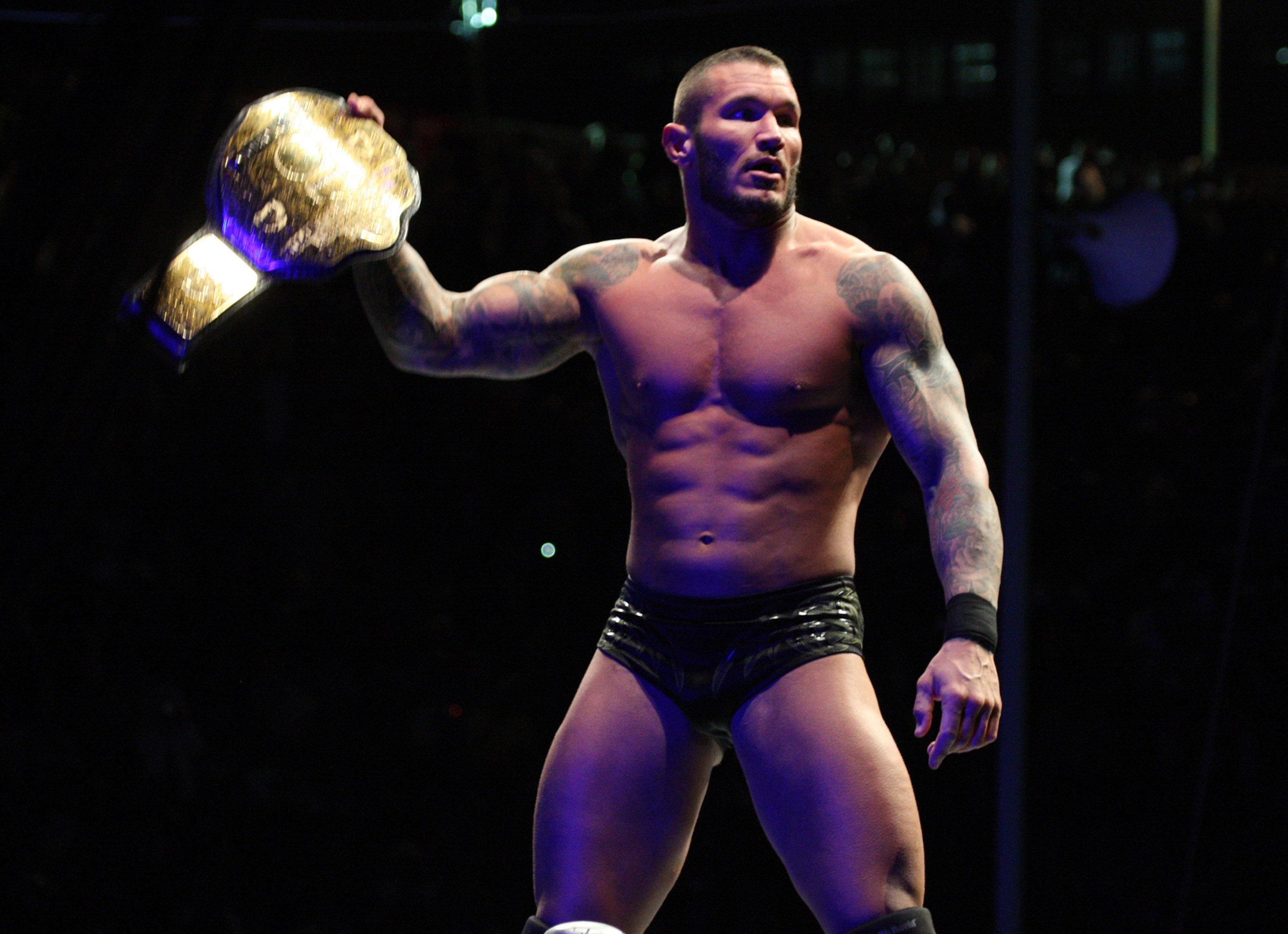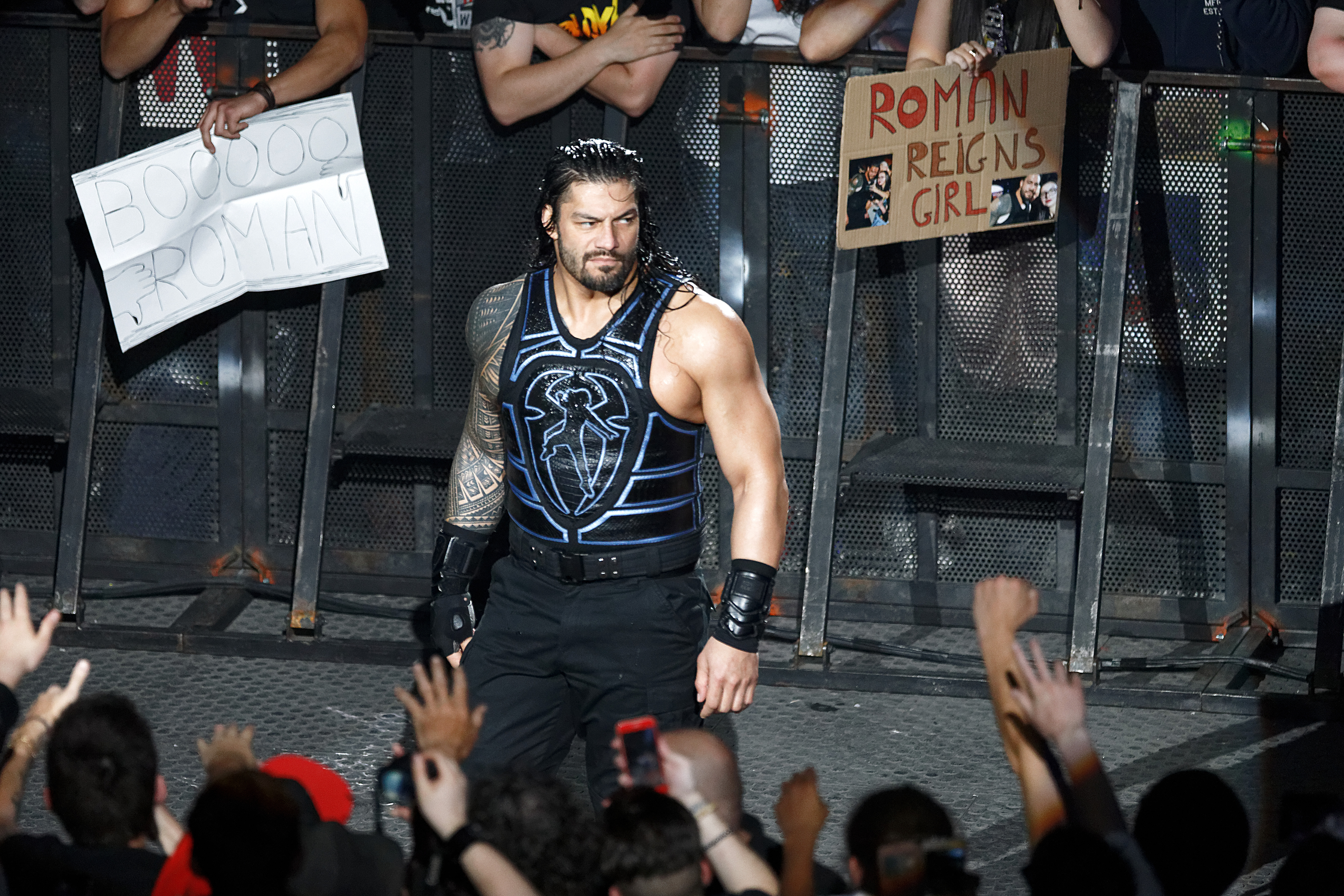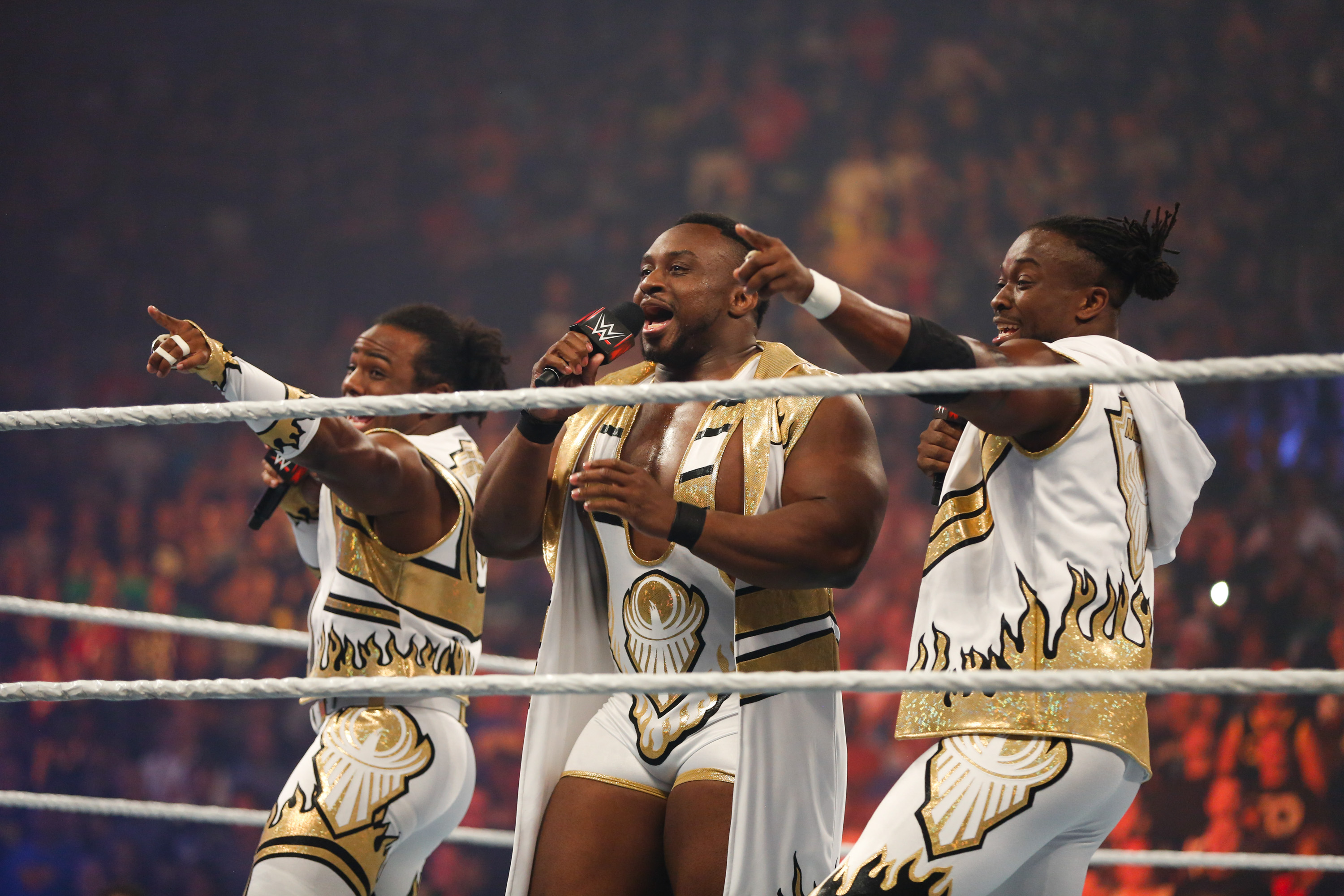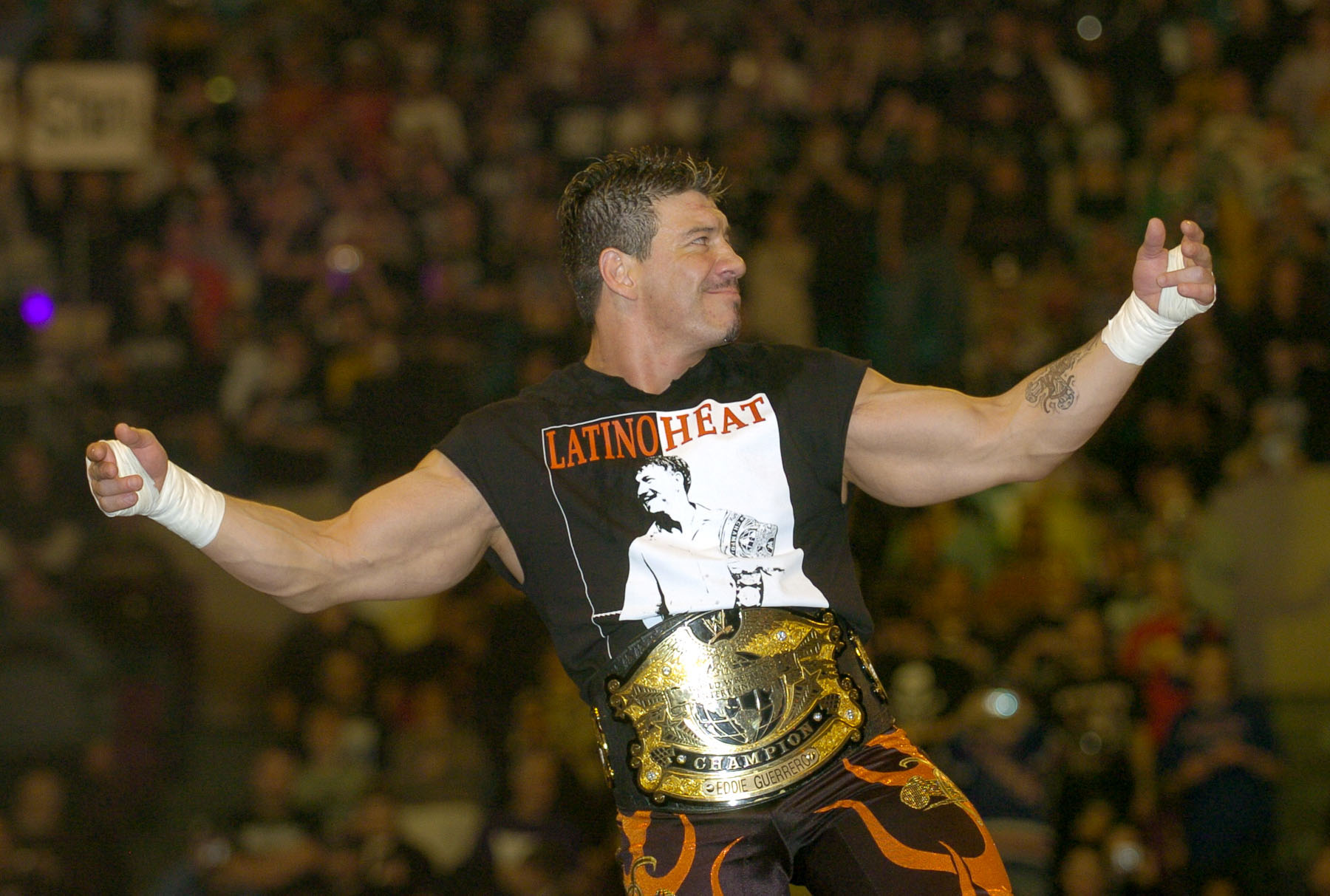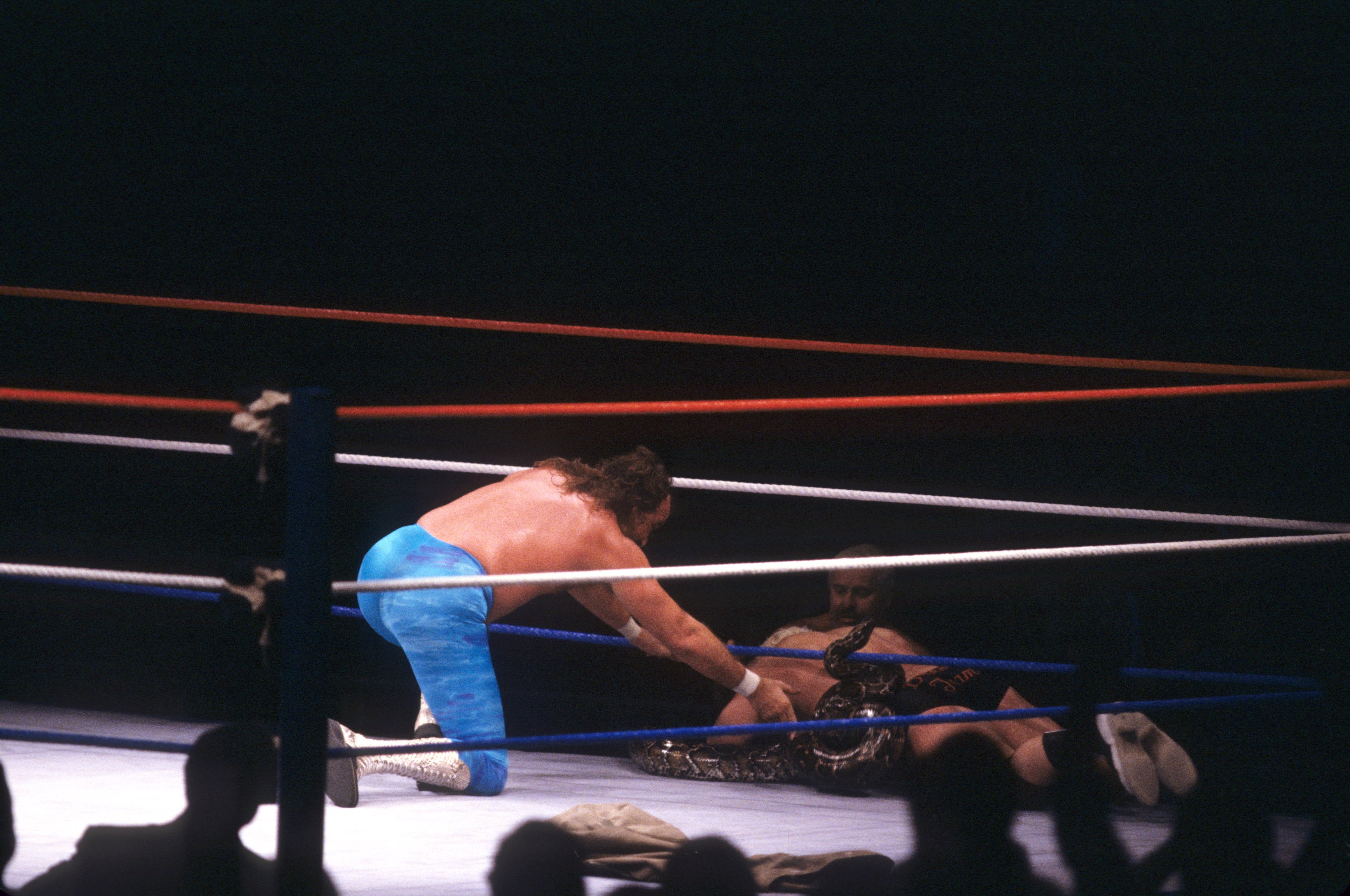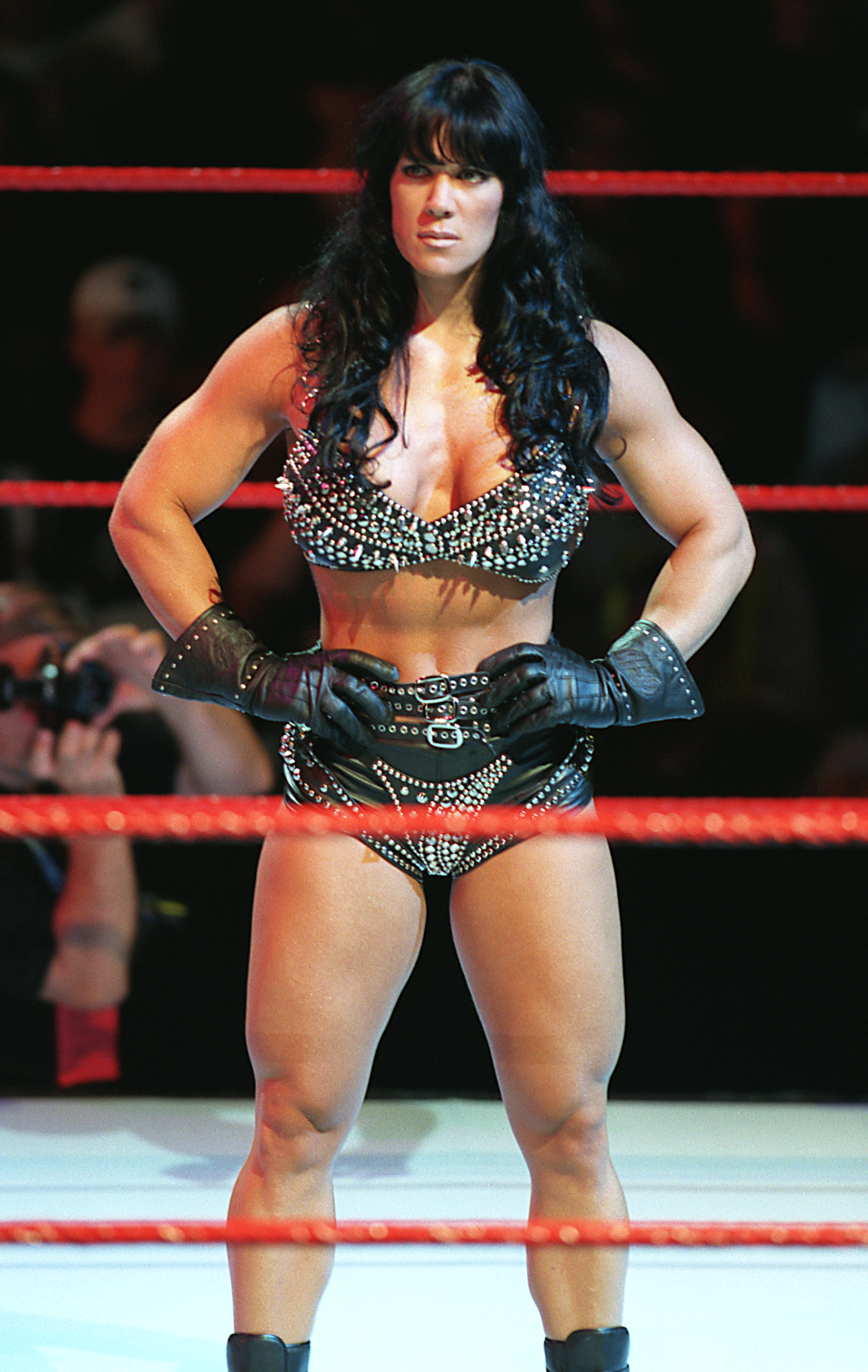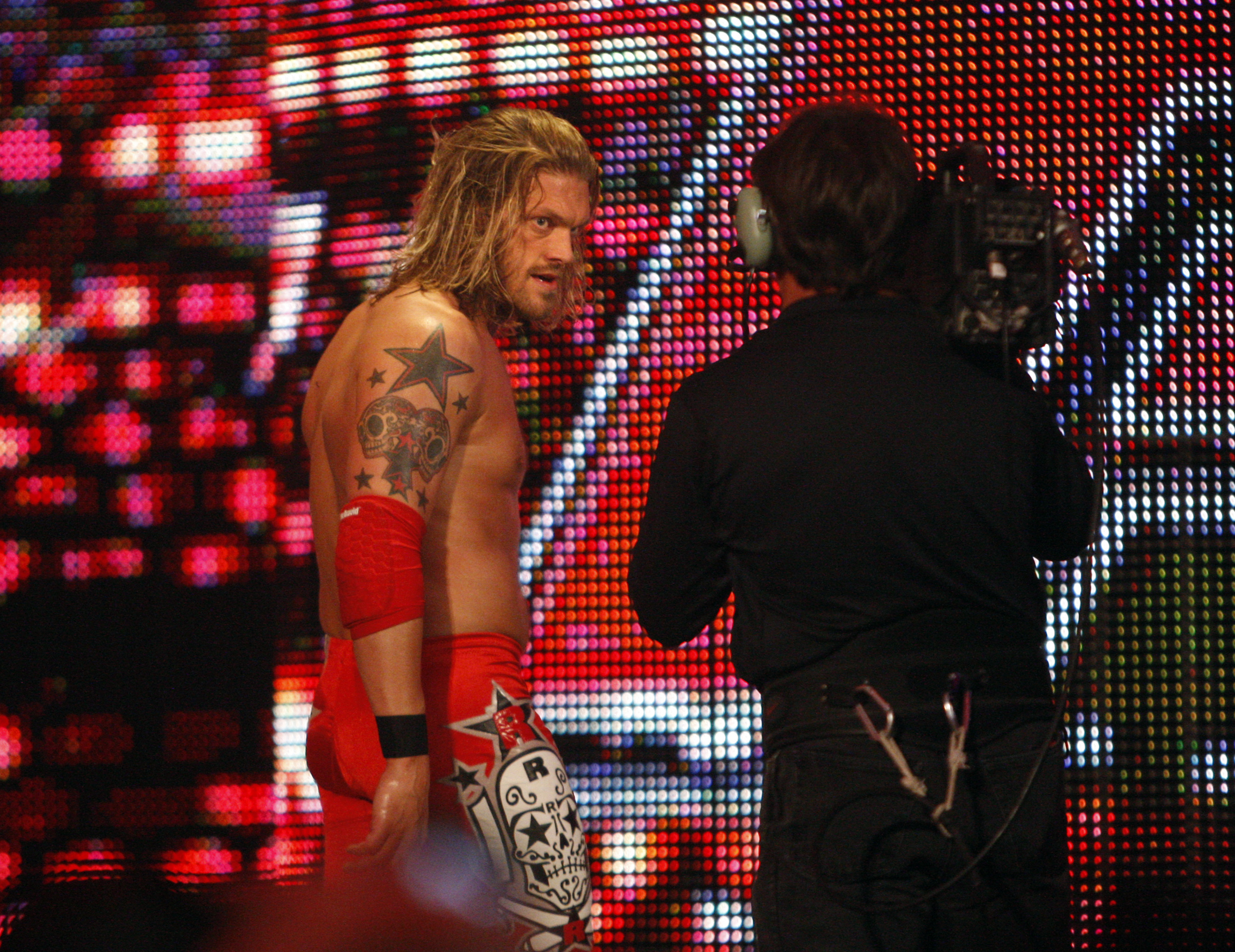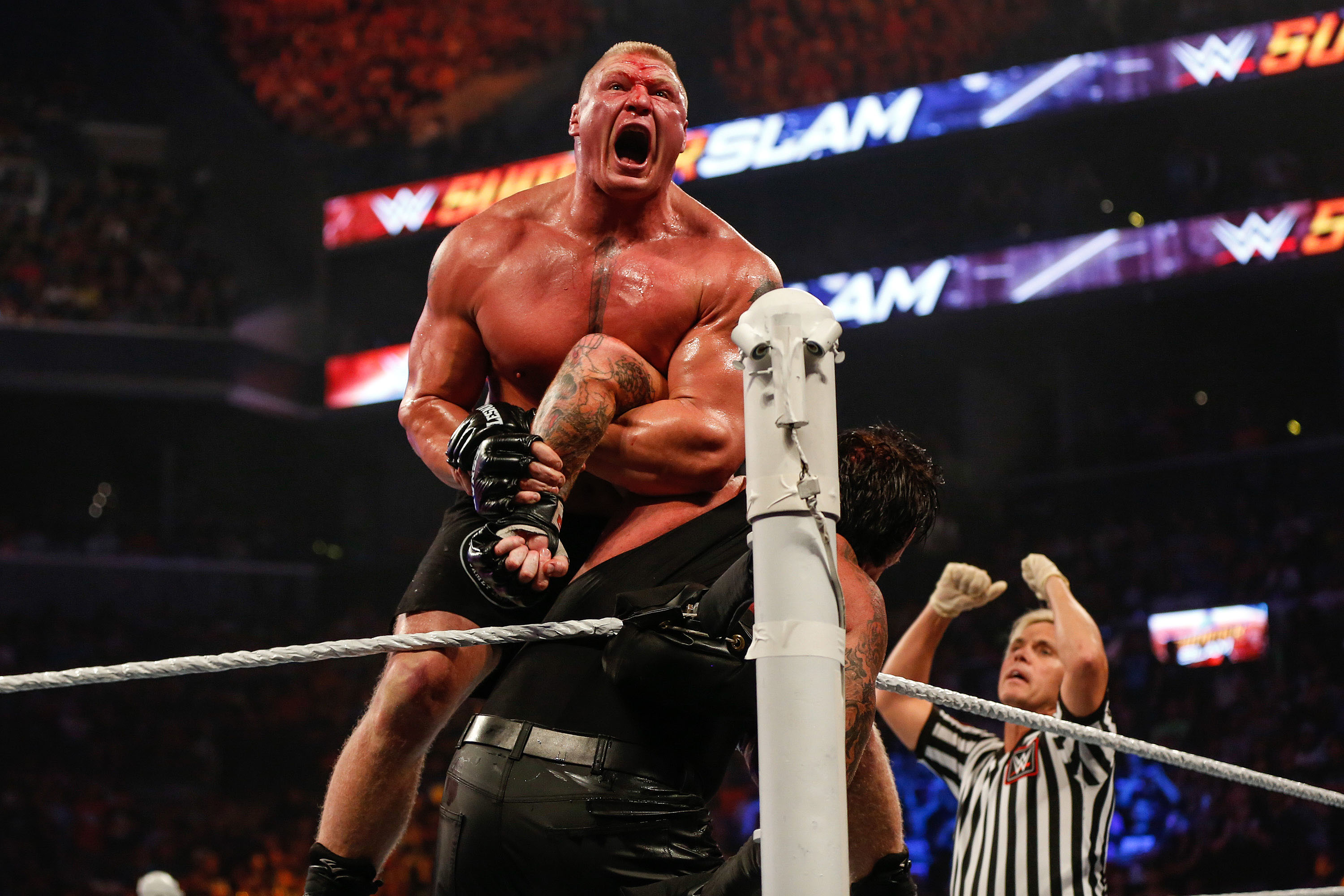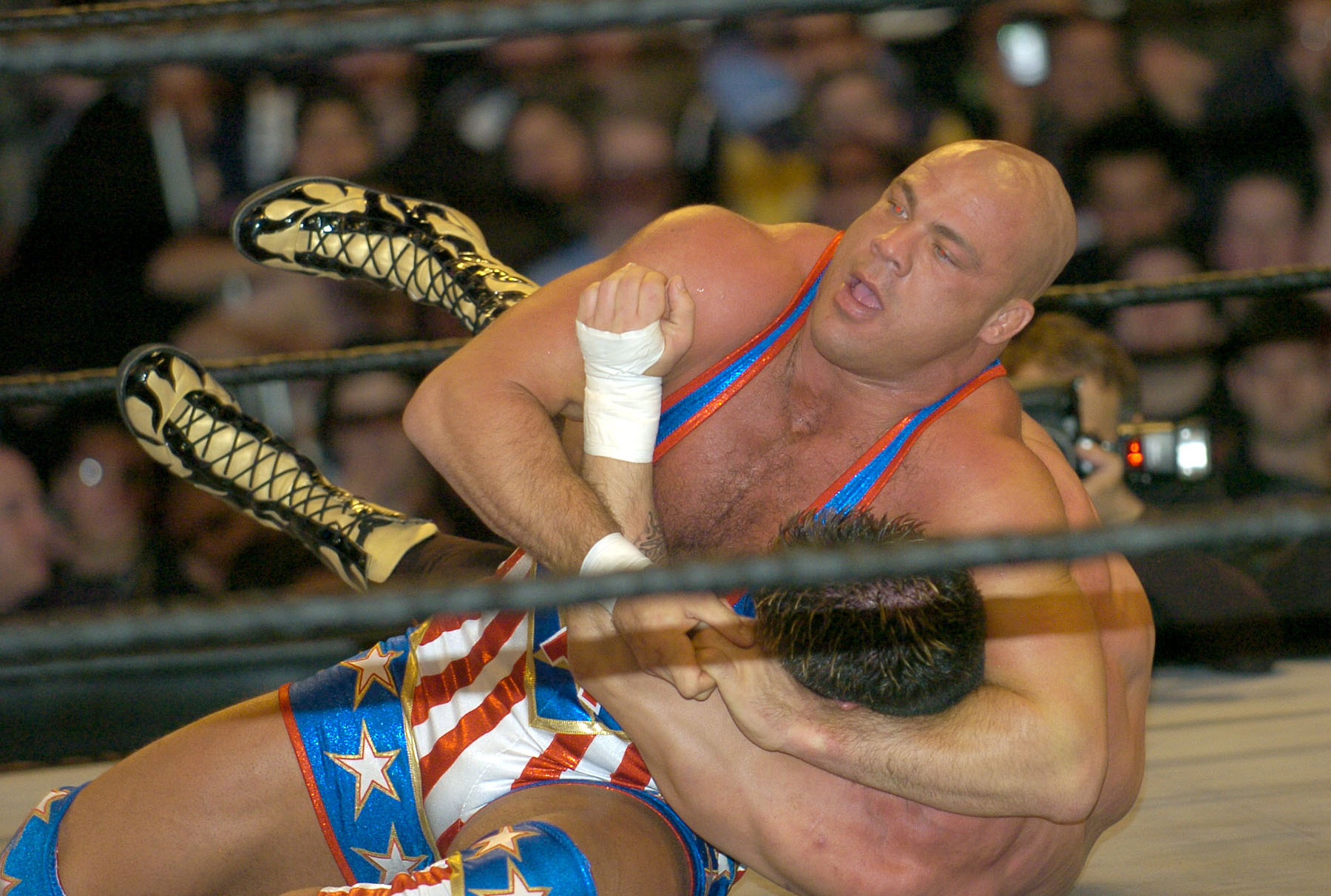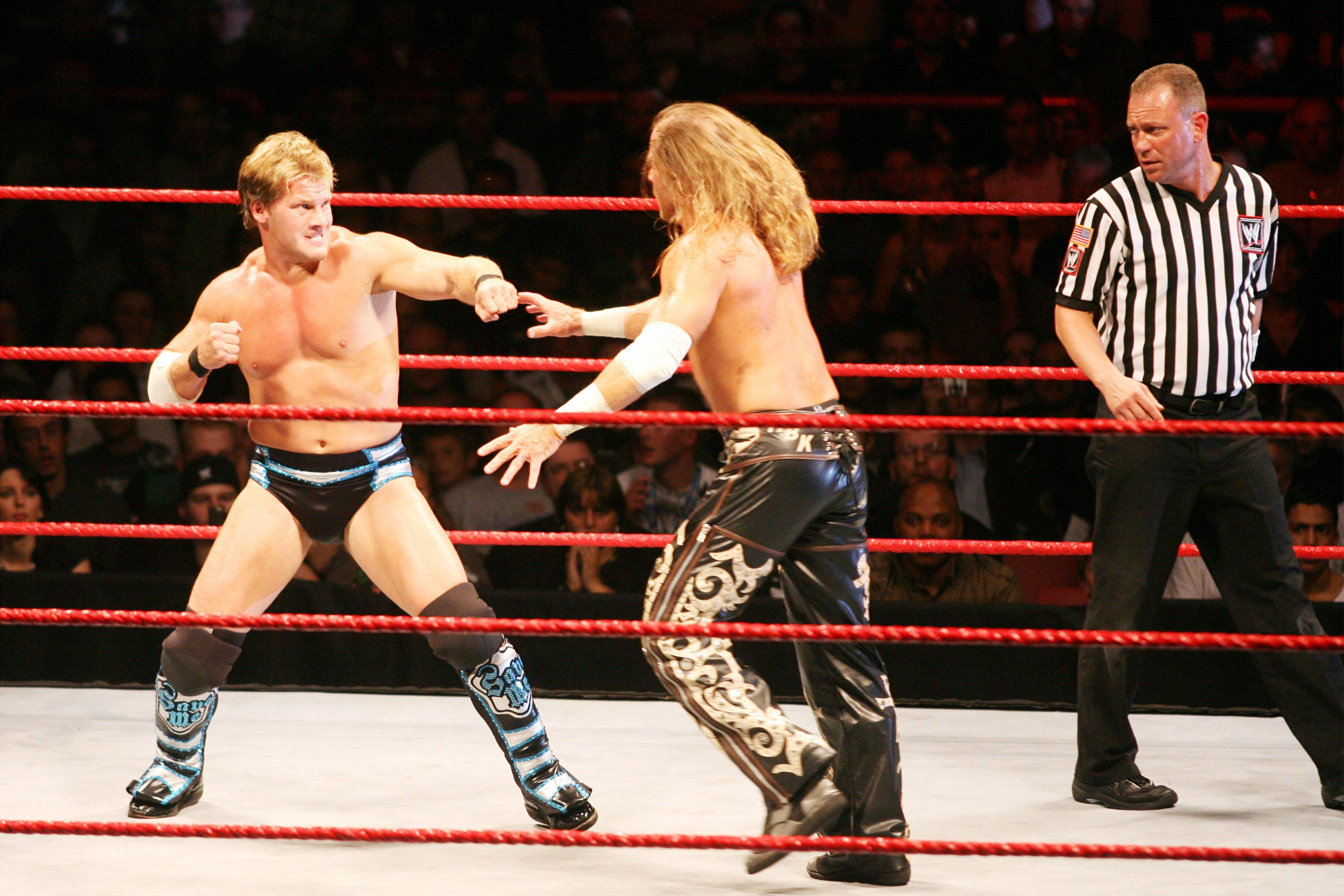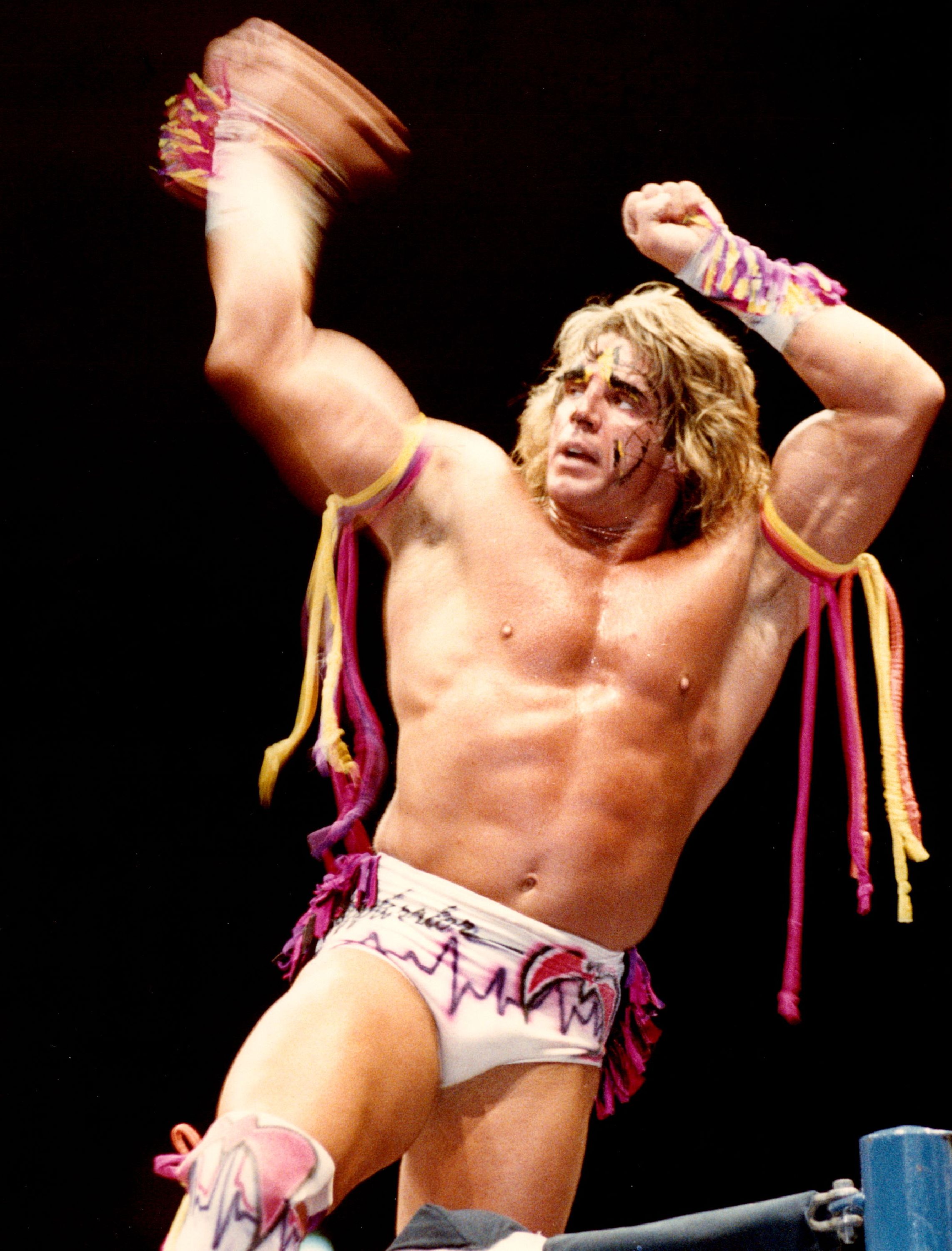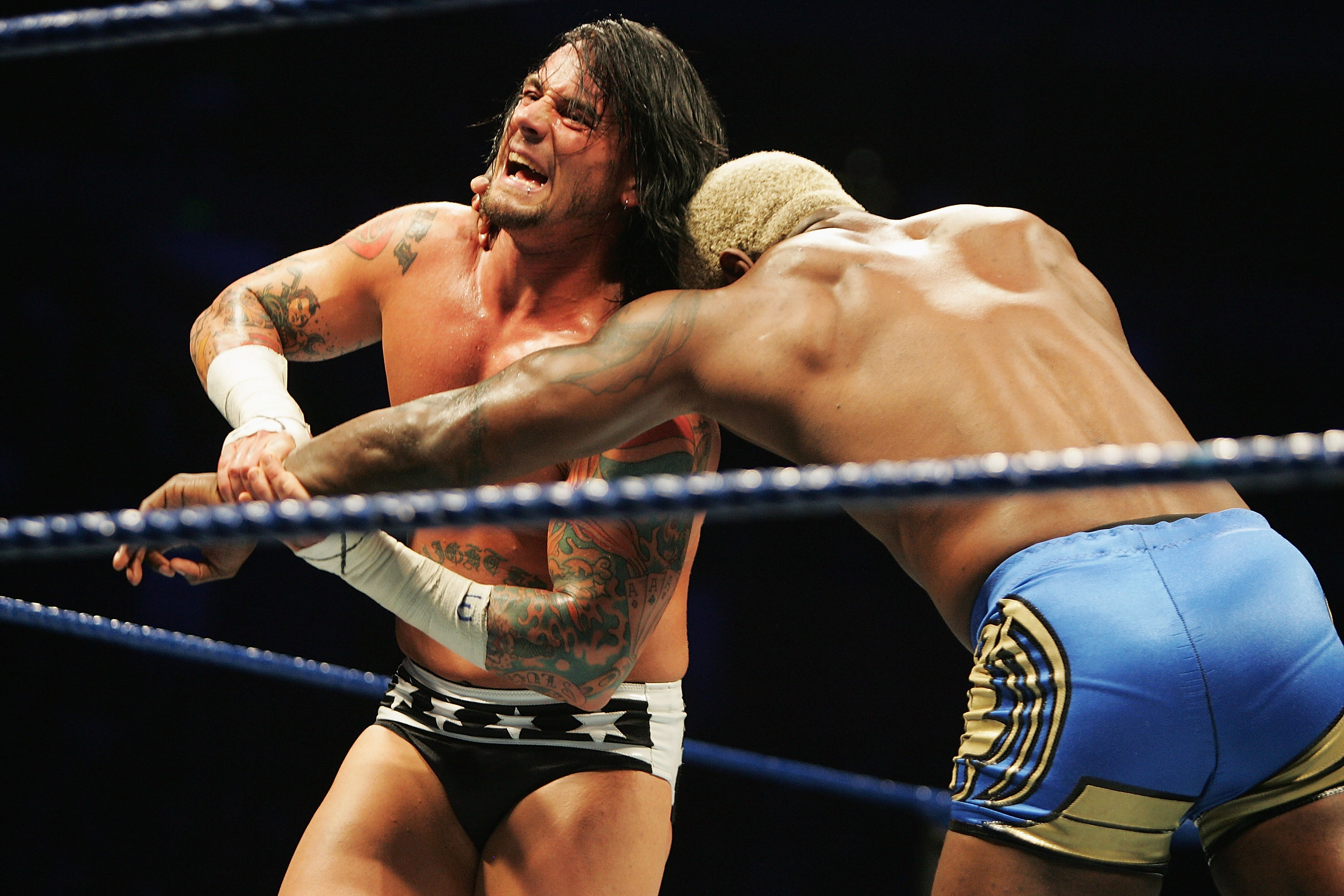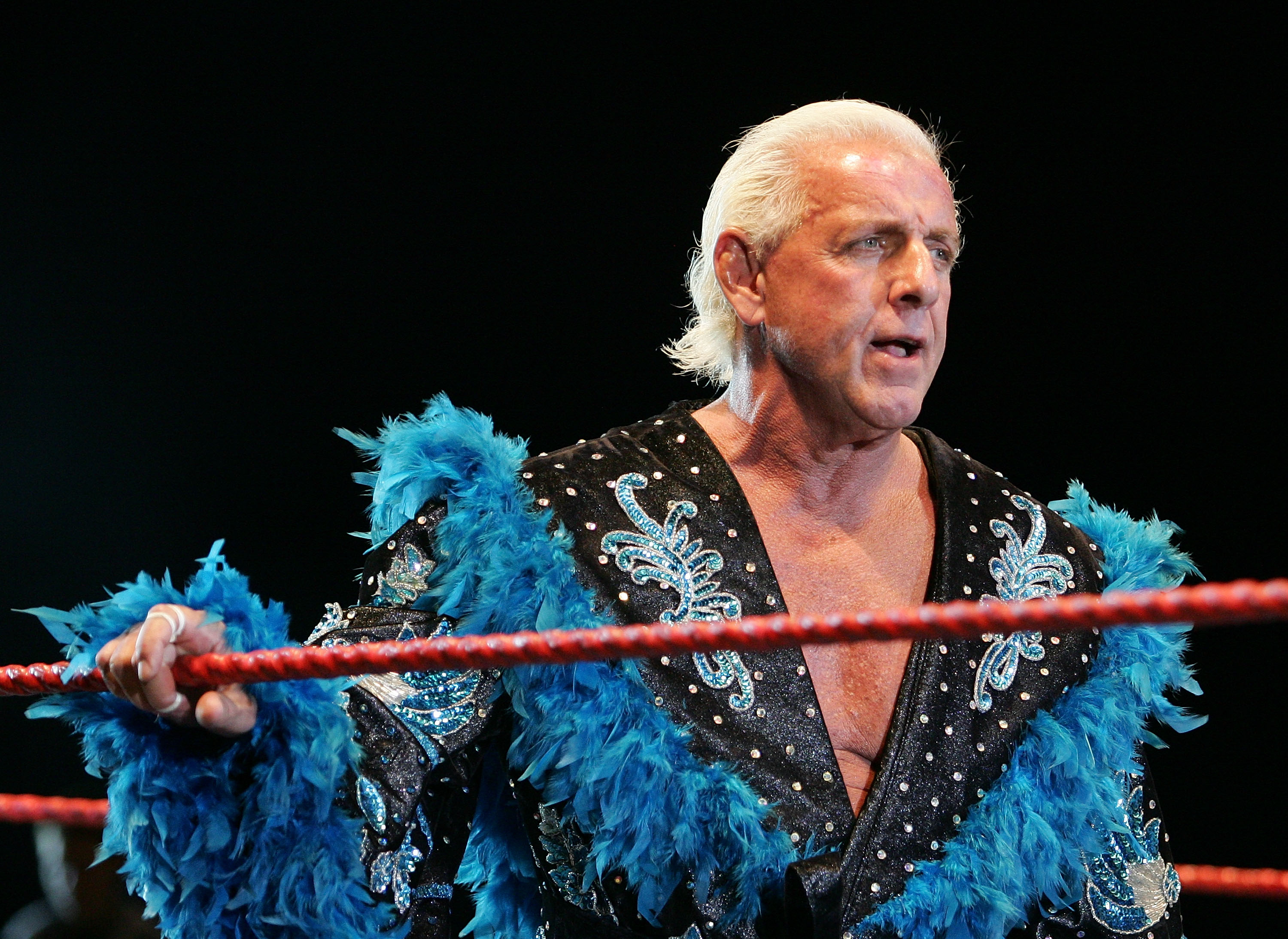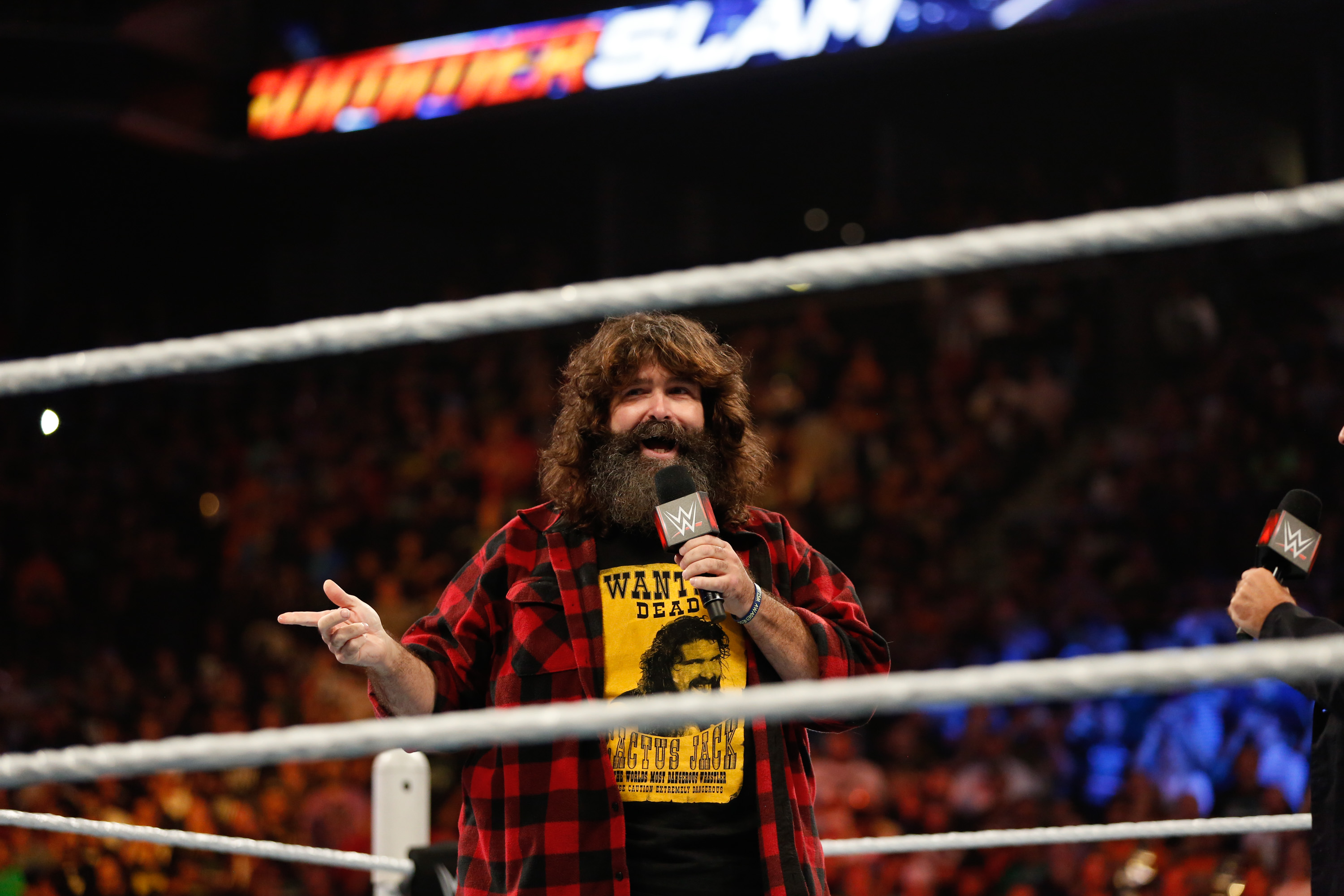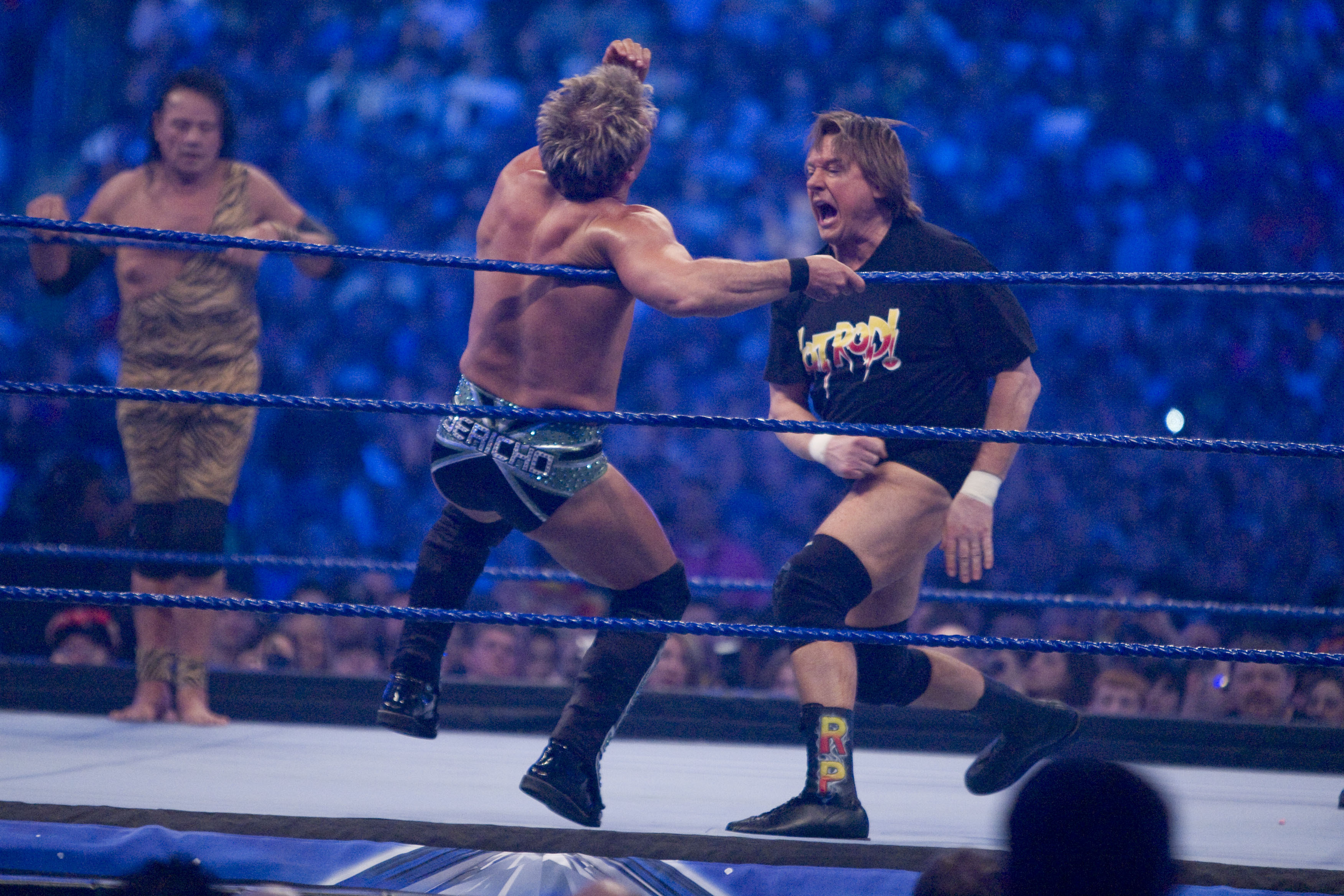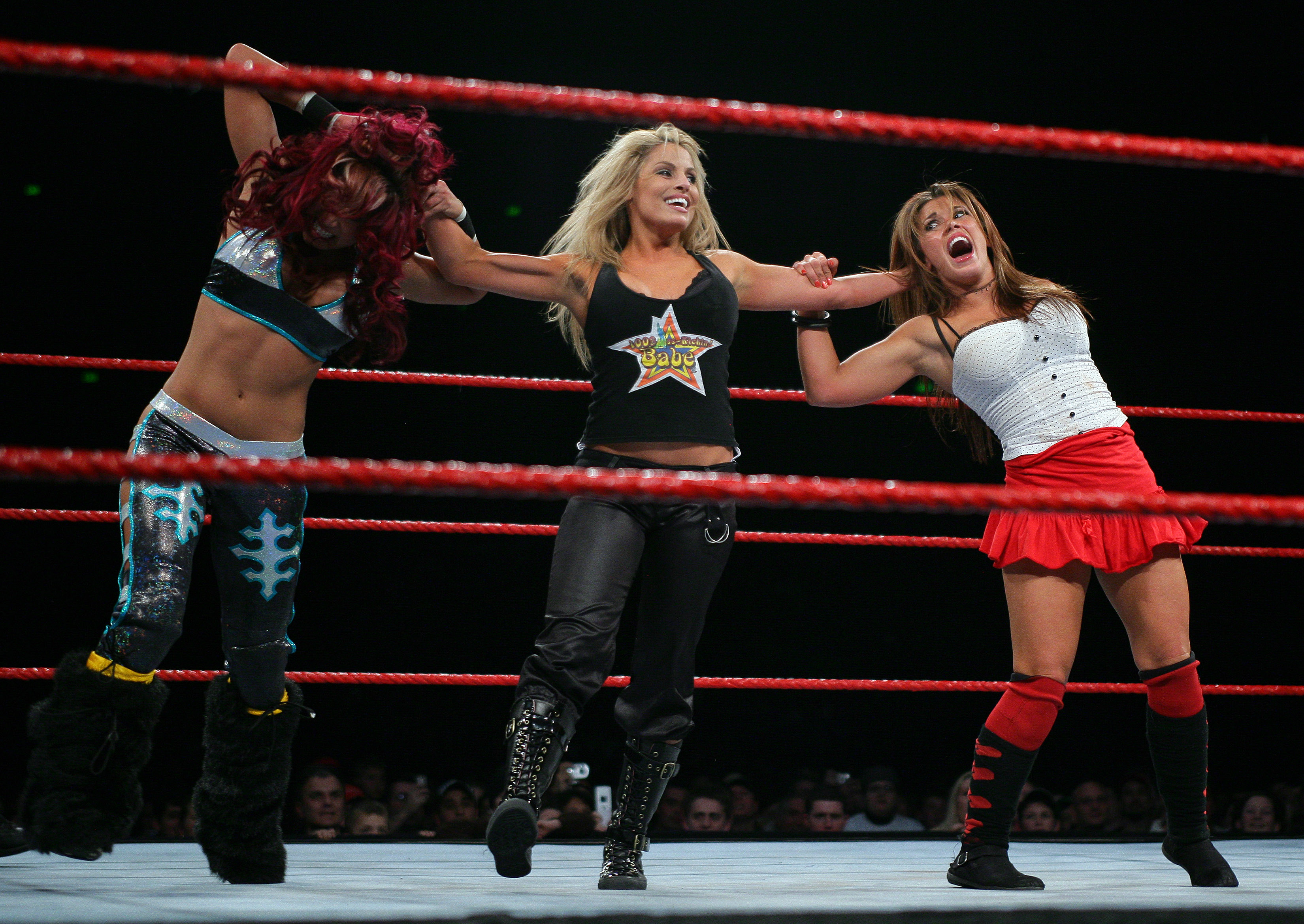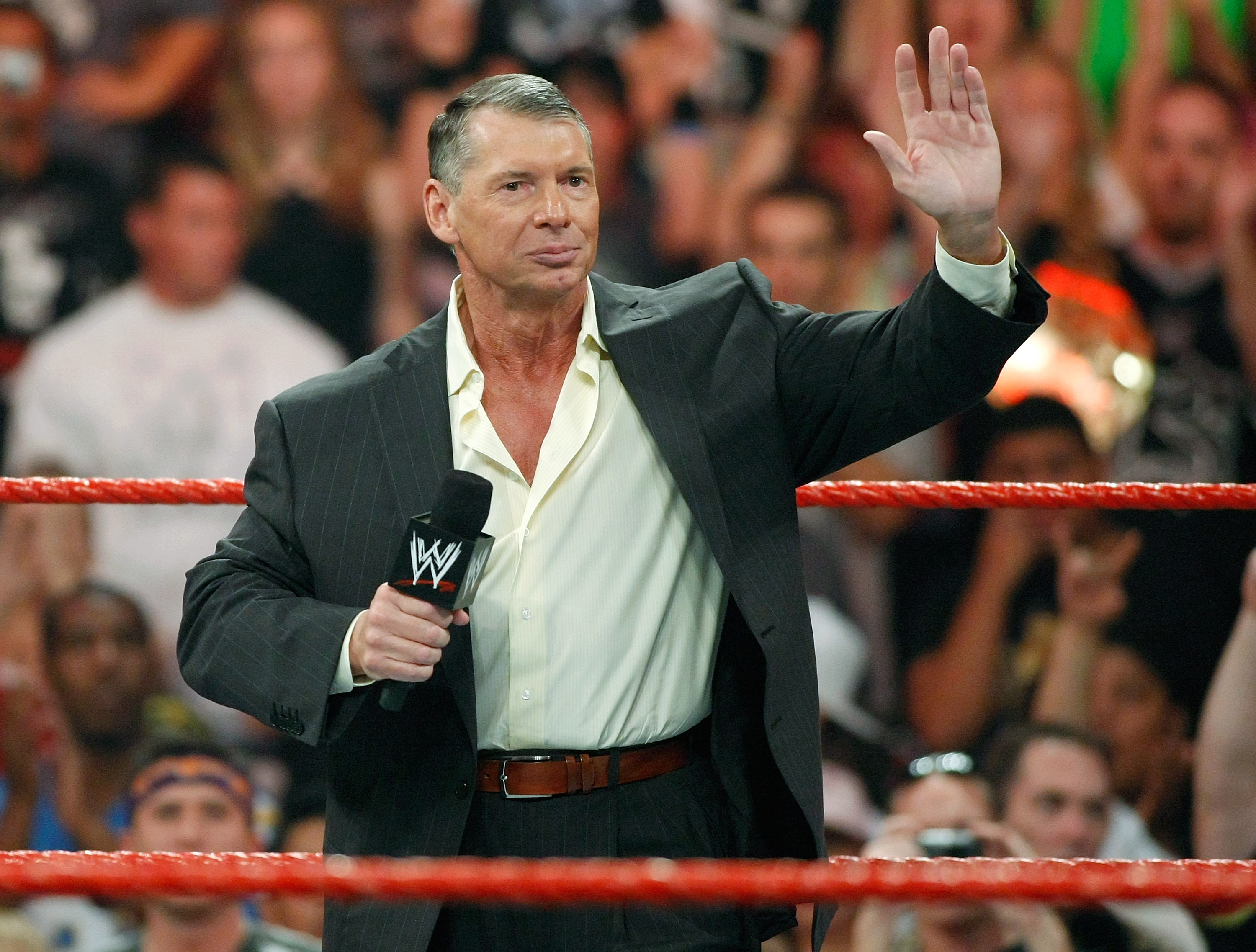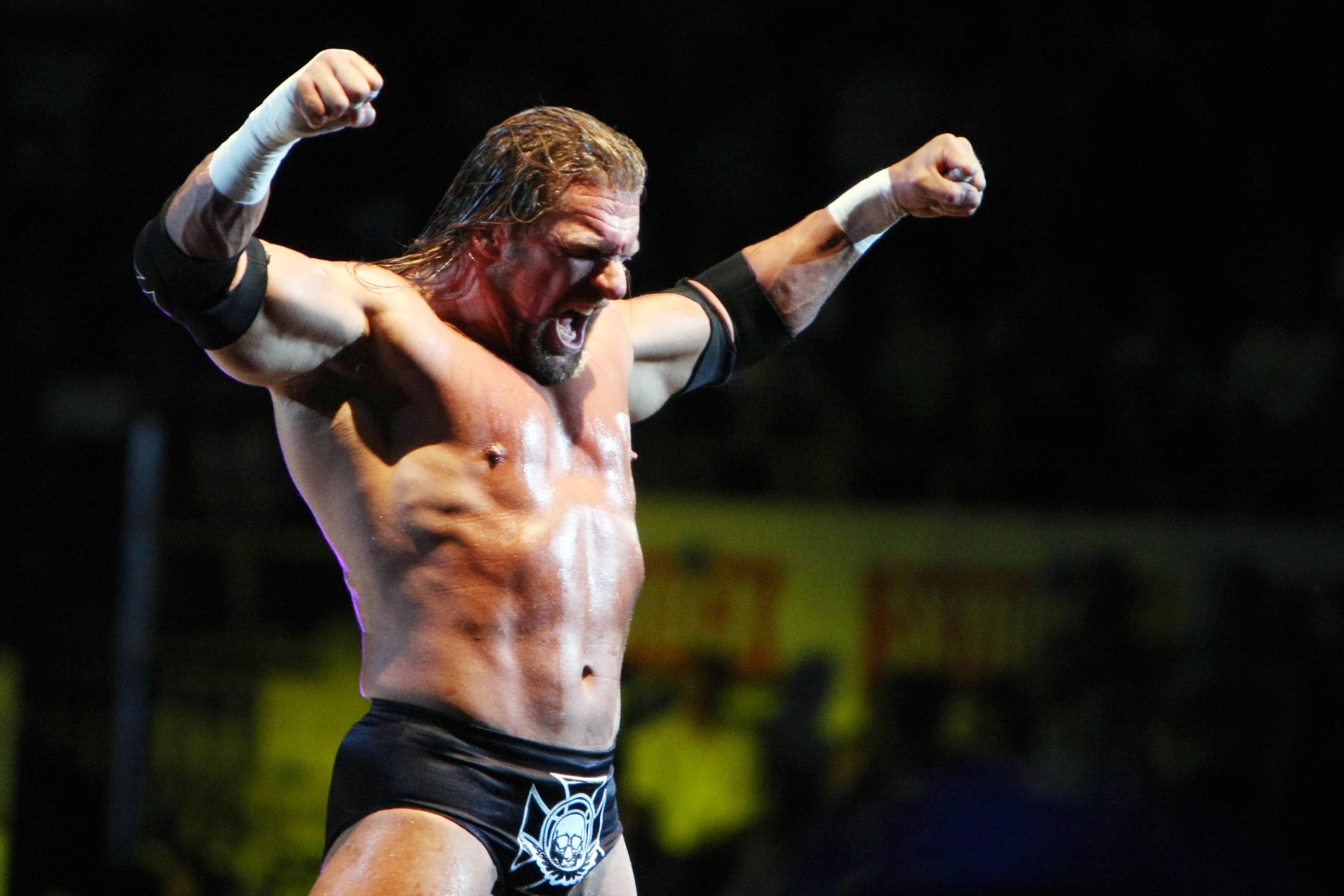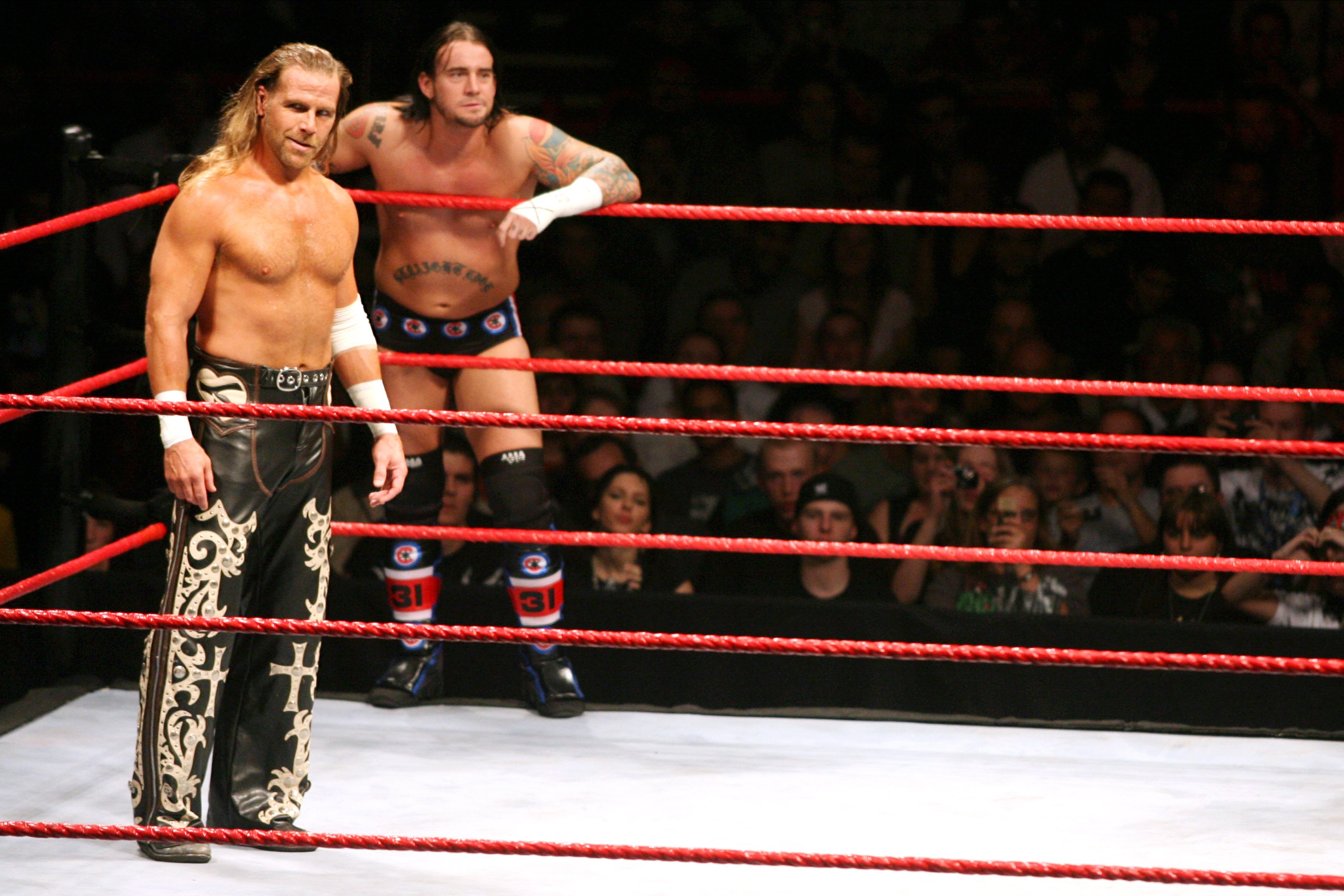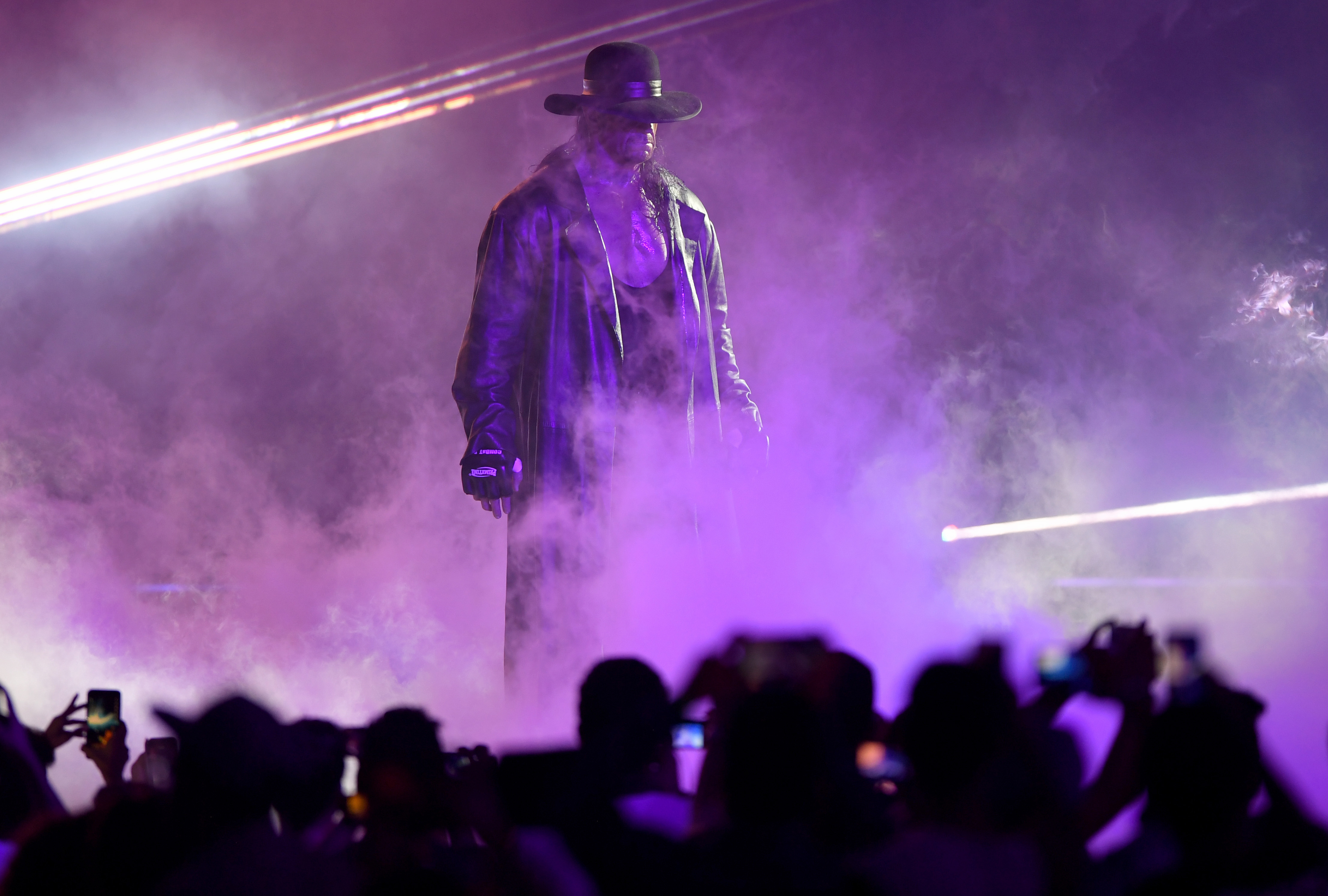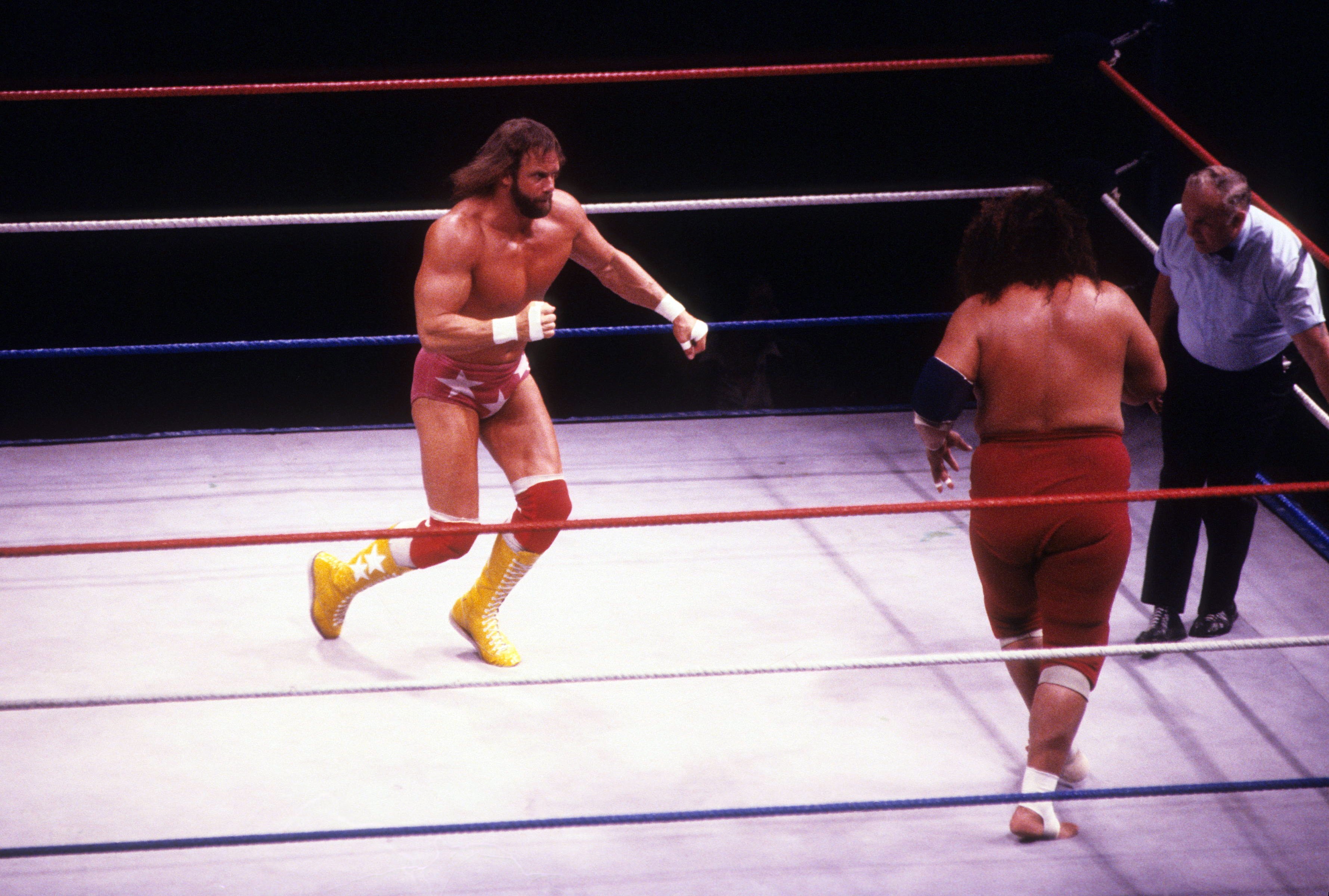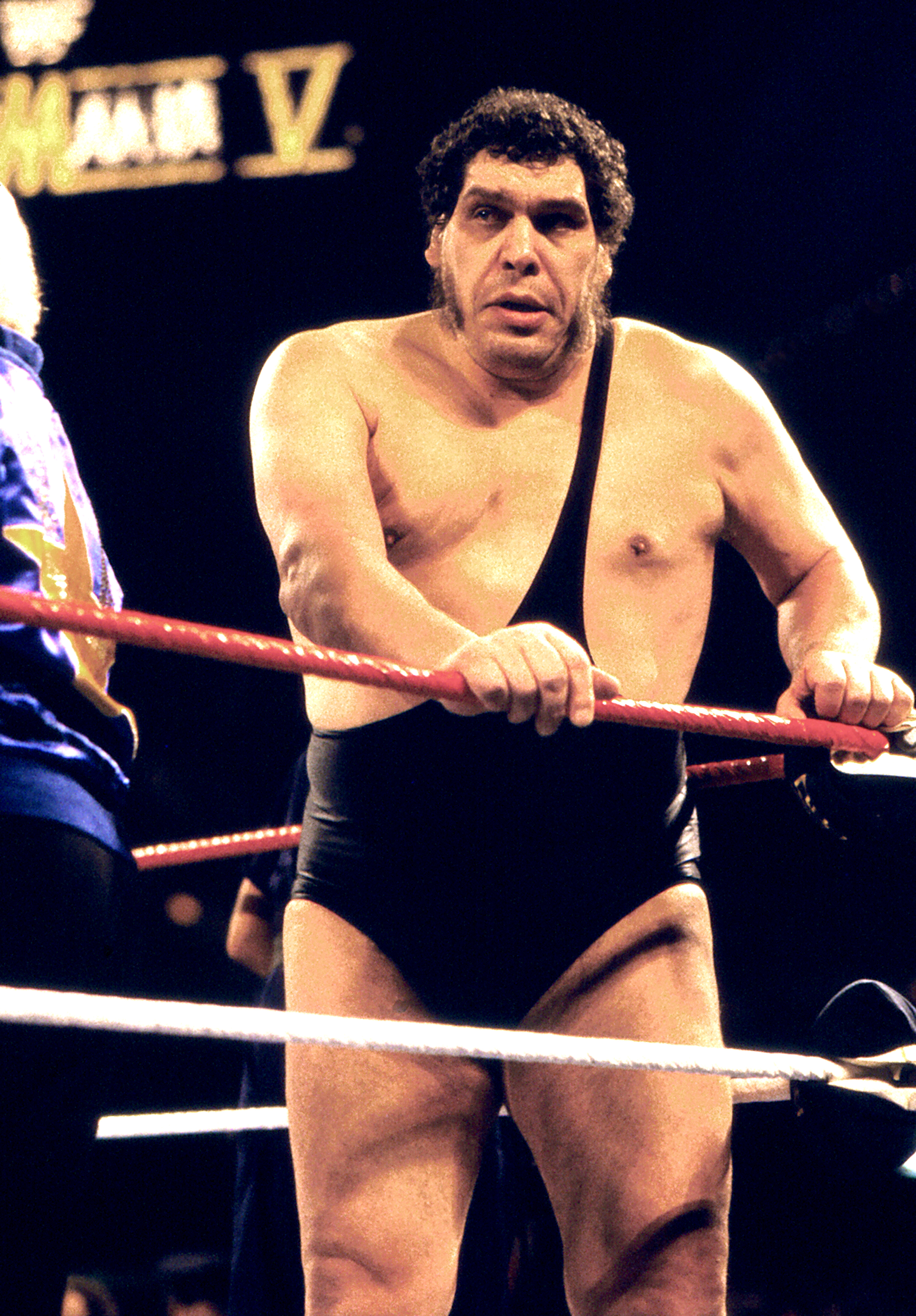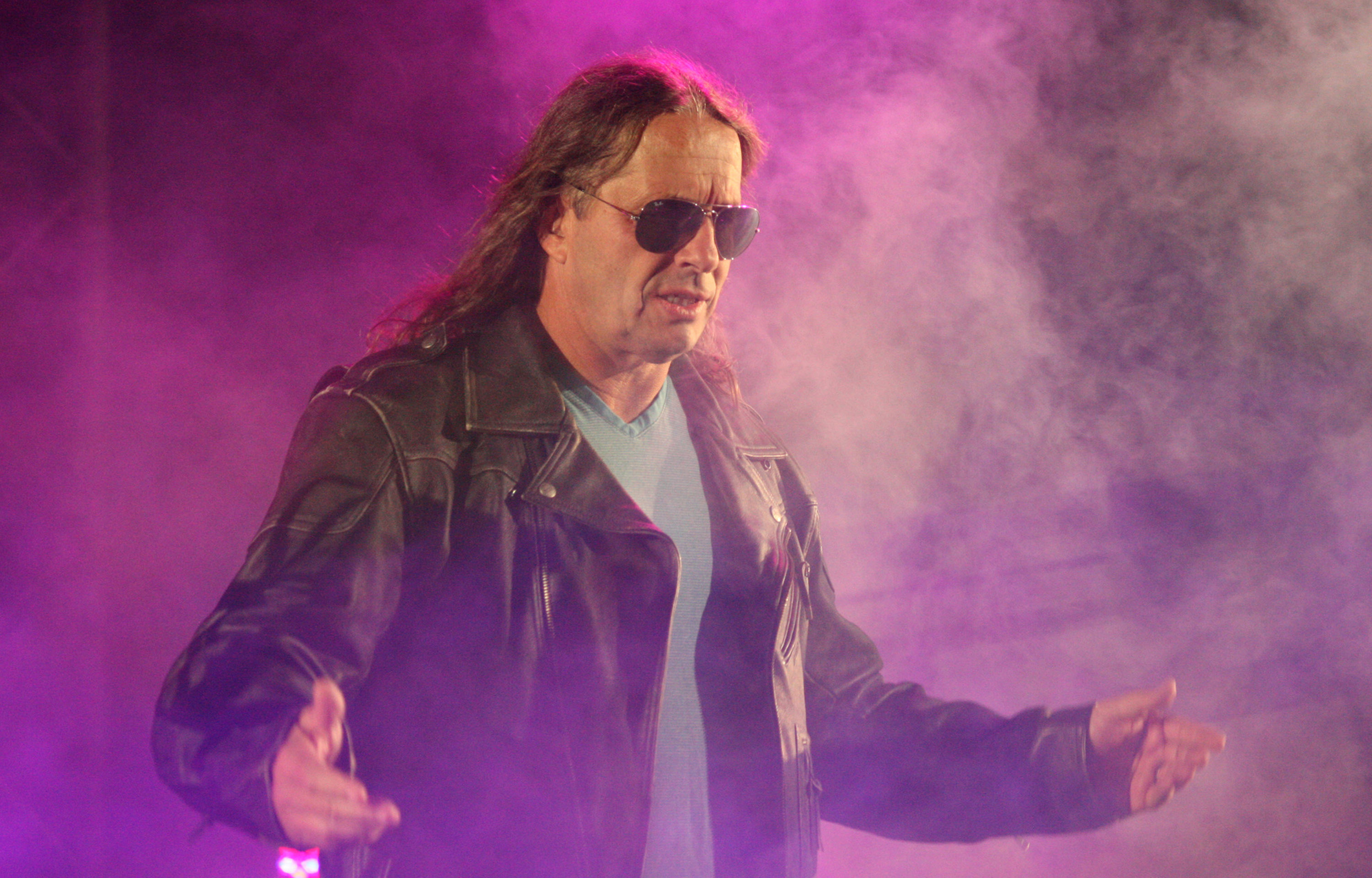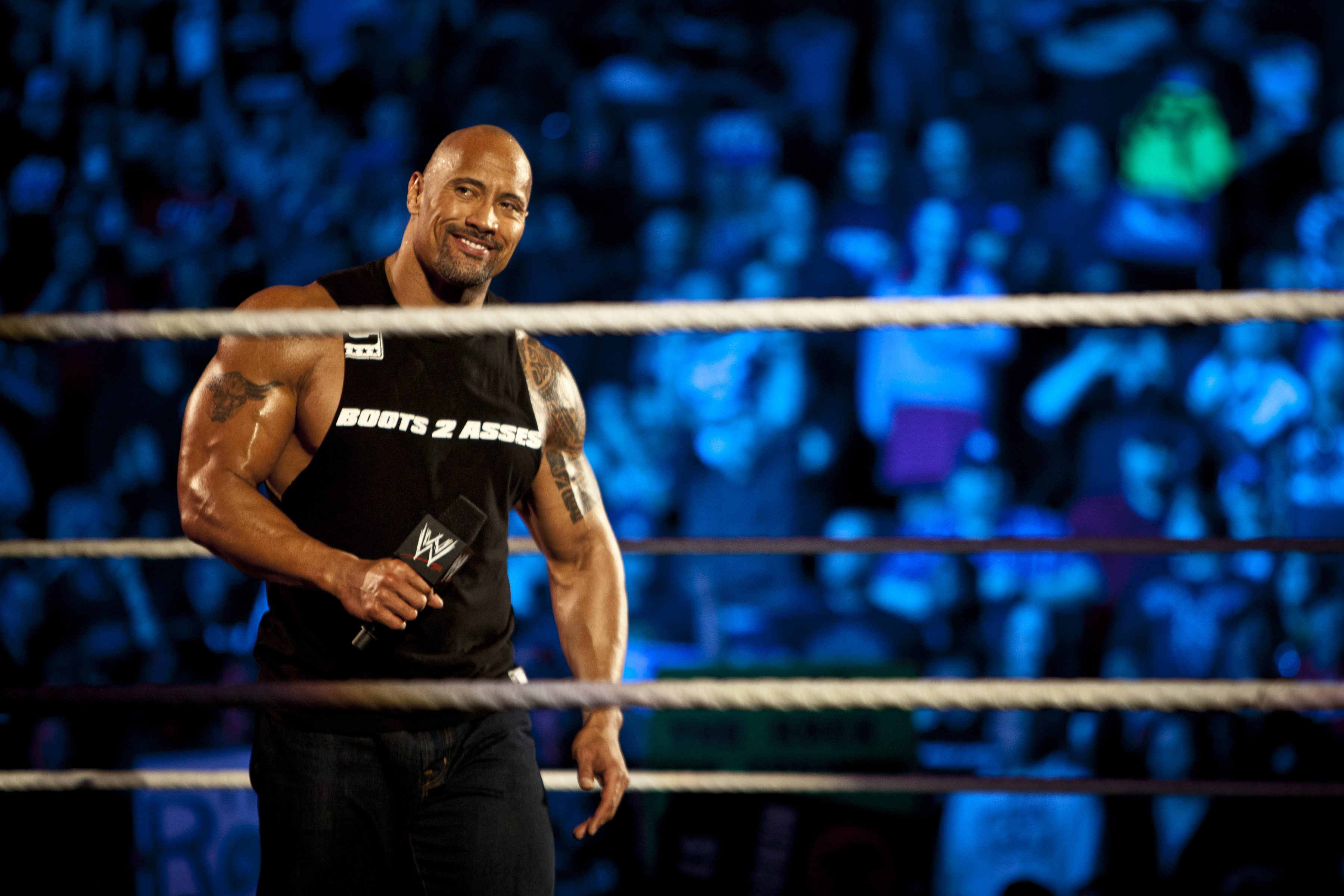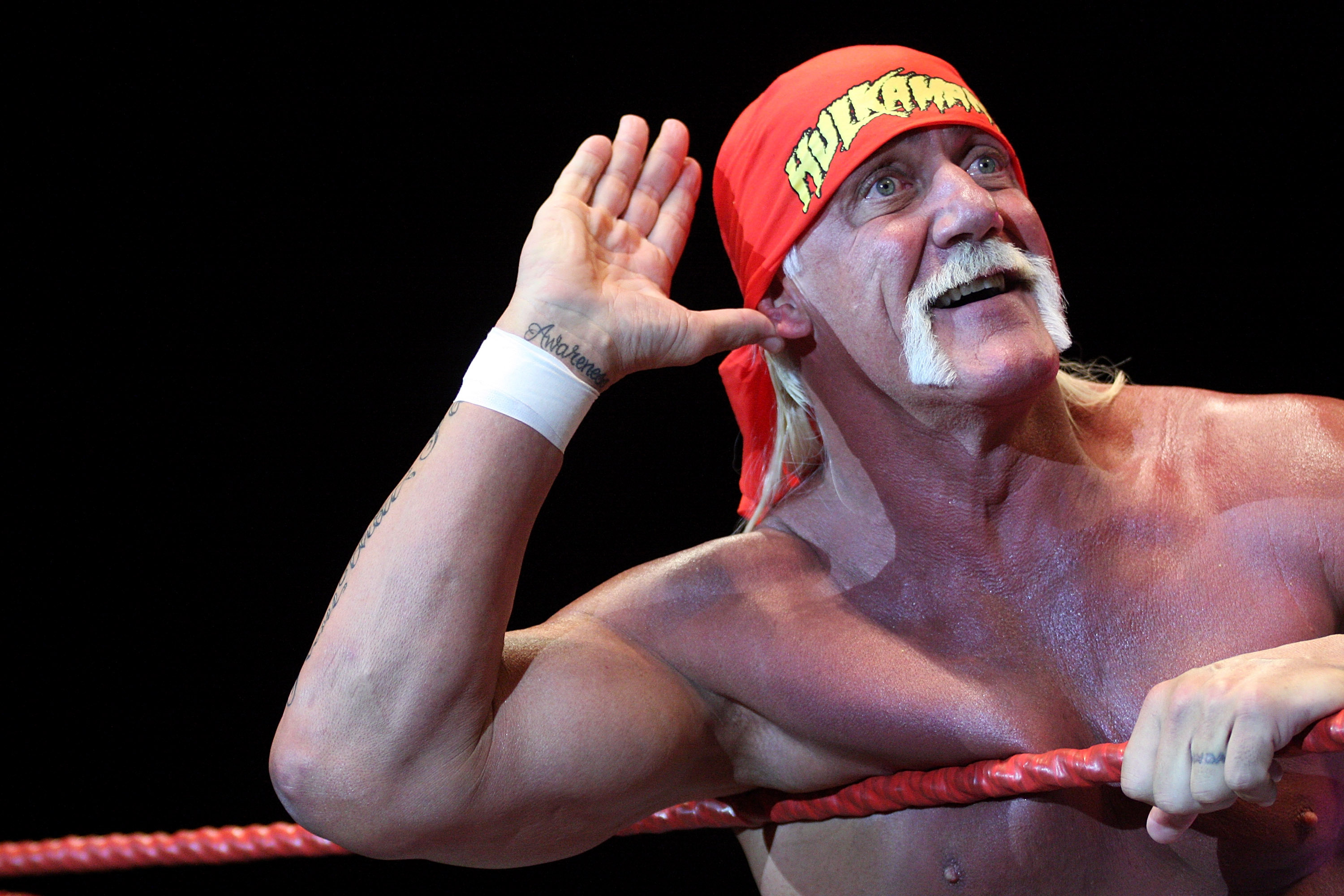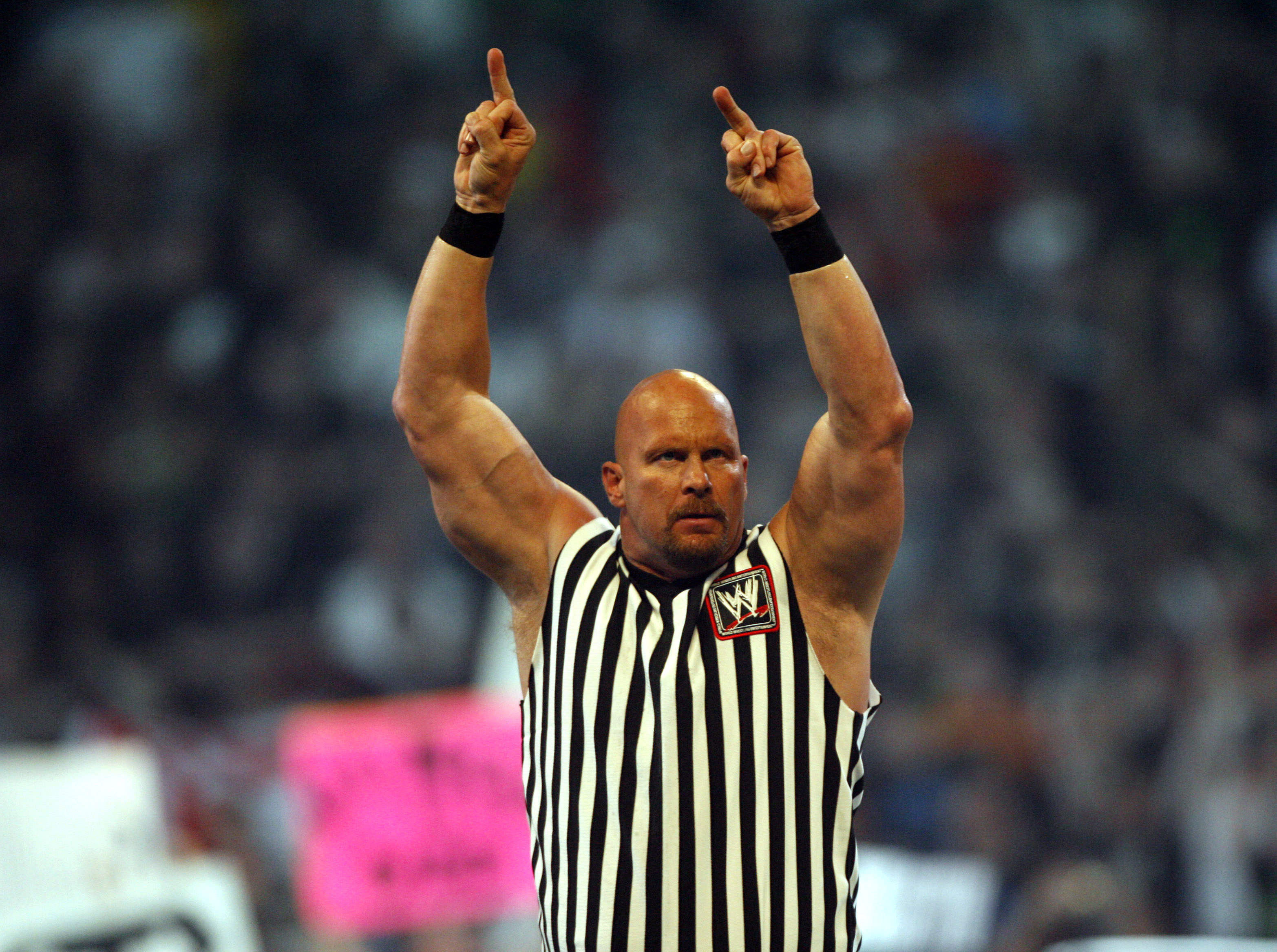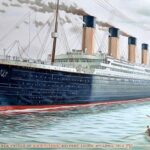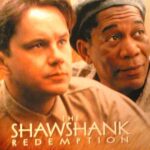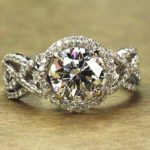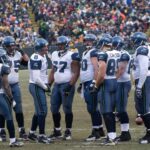The roots of the billion-dollar, globally beloved wrestling brand known as the WWE date back to the 1950s and, since that time, hundreds of men and women have laced up their boots and locked horns in the ring.
Each wrestler leaves an impression on fans in their own way, and the 30 best wrestlers on this list have created (or are in the process of creating) distinct legacies for themselves — by dominating in the ring, winning over fans or raking in revenue for the WWE.
Which of these epic wrestlers is your favorite?
30. Randy Orton
Randy Orton was literally born to wrestle in WWE. The grandson of Missouri wrestling legend Bob Orton and son of former WWE wrestler “Cowboy” Bob Orton, Randal Keith Orton signed with the company in 2001, initially positioned as a babyface. After joining the group Evolution, however, his true vicious nature would emerge. Under the tutelage of Triple H, Orton dubbed himself the “Legend Killer,” attacking icons such as the long-retired Harley Race.
Orton grew into one of the biggest stars of his generation, grabbing the intercontinental championship in his rookie year. In 2004, Randy captured his first world championship at SummerSlam, and at just 24 years old, Orton was now the youngest world champion ever, an honor Brock Lesnar had achieved just two years prior.
Now 39, Orton has amassed several honors including a total of 13 world championship reigns, and perhaps his biggest honor — becoming a meme.
29. Roman Reigns
Joe Anoa’i, of the famed Somoan wrestling dynasty, has compiled quite the list of accomplishments in WWE as Roman Reigns. Though fans haven’t always been on his side, it’s hard to argue with the 32-year-old’s multiple championships. And the company is clearly behind Reigns now, booking him in four consecutive WrestleMania main events.
Anoa’i’s 2018 leukemia diagnosis shocked the “WWE Universe,” but with the disease now in remission, he is poised to add to his list of accomplishments.
28. Charlotte Flair
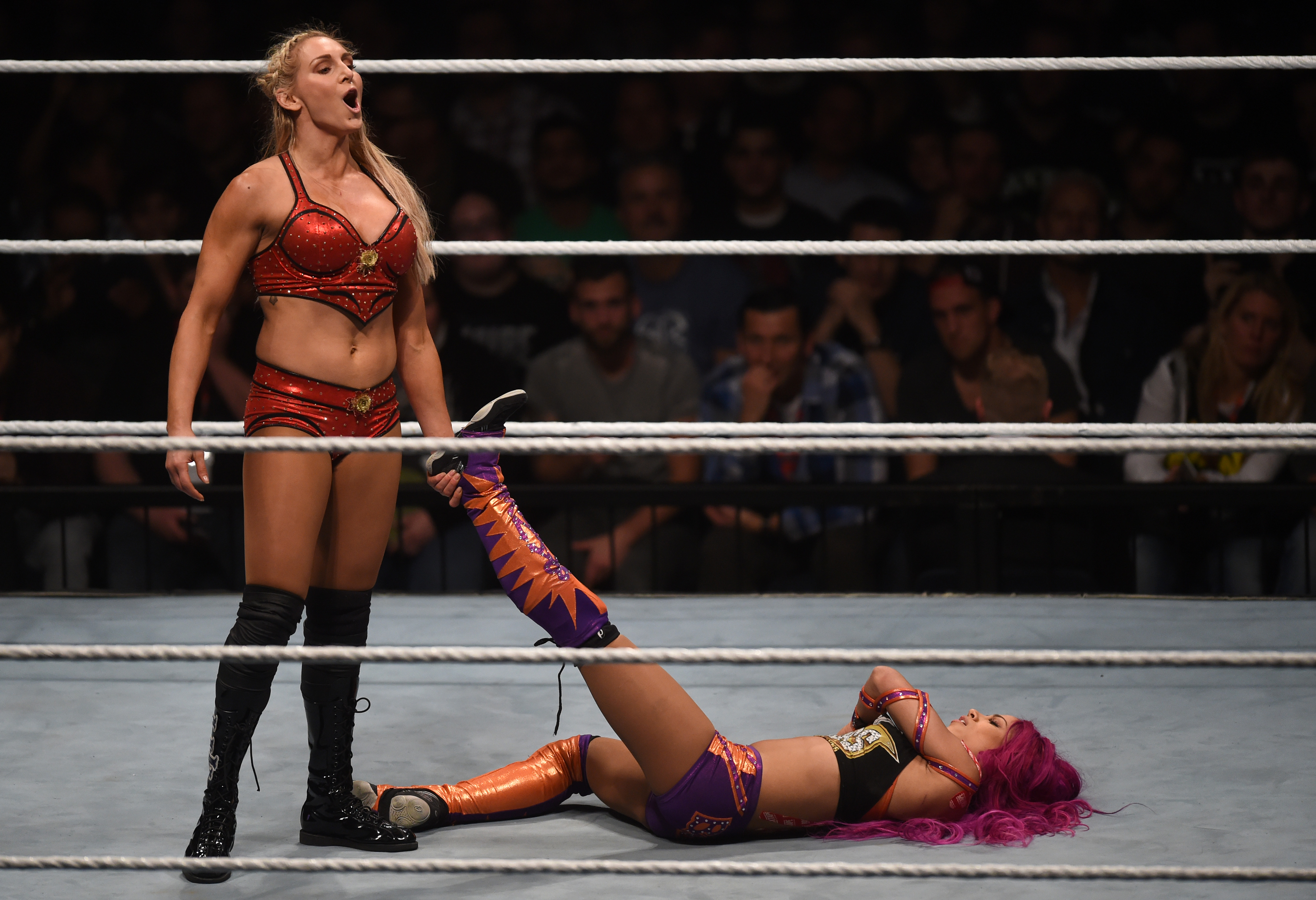
A lot was expected of Charlotte Flair when she debuted in WWE. The daughter of Ric Flair (No. 16 on this list), Charlotte has “the business” in her blood. She made her mark immediately by winning a record 16 consecutive pay-per-view matches.
As part of the “four horsewomen” of wrestling, Charlotte has been at the forefront of WWE’s women’s wrestling revolution. Since 2015, she has racked up a record nine Women’s Championships.
This past April, she even co-headlined WrestleMania — the first time in the show’s 35-year history a women’s match closed the show.
27. Owen Hart
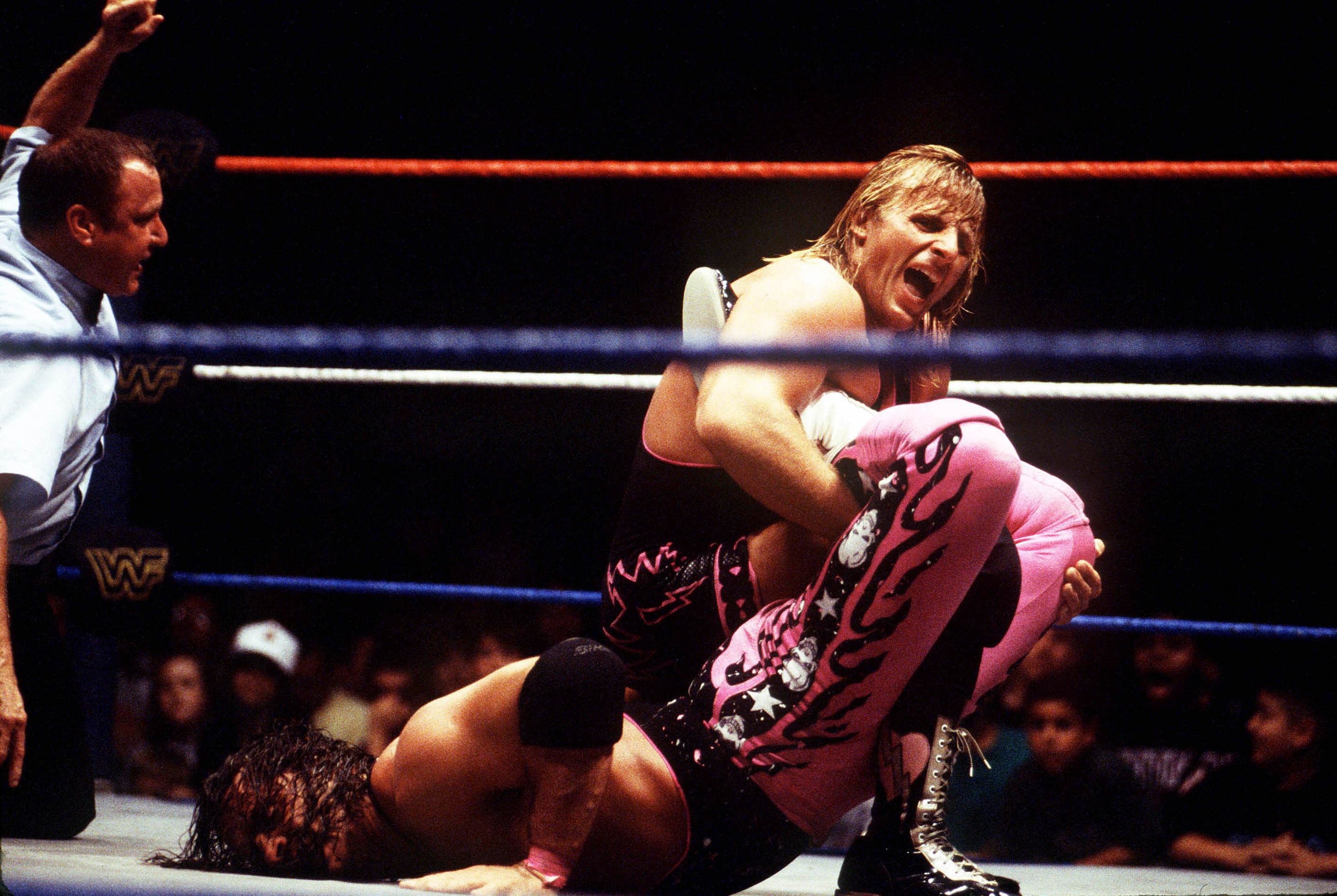
Owen Hart was one of the most respected stars of his time. Trained by his father Stu in a basement studio dubbed “the Dungeon,” Hart became known as a master technician. He used those skills to turn in classic matches with his brother Bret (No. 6 on this list) and Steve Austin (No. 1) while capturing multiple intercontinental and tag-team titles.
Hart was equally adept at entertaining fans as his superhero alter-ego, the “Blue Blazer.” Sadly, an in-ring accident cut short his life and career in 1999.
26. The New Day
When they debuted in 2014 as an effusive, gospel-inspired trio, the New Day was not exactly embraced by WWE fans. But their natural chemistry and lighthearted nature took the gimmick further than anyone could have anticipated.
They have since become one of the company’s top merchandise-sellers, moving everything from T-shirts to unicorn horns to “booty”-inspired cereal. Their popularity forced the WWE to change its rules to allow New Day to hold the tag-team championship as a trio. They have since held the belts five times, including one epic 478-day reign.
New Day member Kofi Kingston continued the group’s success by becoming the first African-born WWE Champion at this year’s WrestleMania.
25. Eddie Guerrero
Like many on this list, Eddie Guerrero came from a wrestling family. The “Latino Heat” distinguished himself in WWE by transcending the tendency toward ethnic caricatures and marginalization of smaller performers. Throughout his career, Eddie had memorable matches with several wrestlers on this list including Kurt Angle, Chris Jericho and Brock Lesnar.
In fact, Guerrero defeated Lesnar in stunning fashion to capture the Undisputed Championship in 2004 — WWE’s top title at the time.
24. Jake Roberts
Jake “The Snake” Roberts is one of the few WWE stars on this list to have never won a championship. Instead, Roberts made his indelible mark through subtle character work. Roberts was known as a master of “ring psychology.” While other stars of the 1980s shouted superlatives to the mezzanine, Roberts’ raspy, whispered delivery was just as menacing.
The live, six-foot-long boa constrictor he carried to the ring was pretty scary, too.
23. Chyna
Known as the “Ninth Wonder of the World” thanks to her extraordinary physique, Chyna debuted as a valet for the D-Generation X stable. In short order, she began breaking barriers, marking achievements most male competitors only dreamed of — while she kicked their butts.
Chyna was the first woman to qualify for the King of the Ring tournament and the Royal Rumble match. She was also the first woman to capture the Intercontinental Championship, a feat she accomplished twice.
22. Edge
In the late 1990s and early 2000s, edgy characters reigned in WWE … no pun intended. For Adam “Edge” Copeland, that character ranged from a vampire’s sidekick to the “ultimate opportunist.”
Once named “most likely to be WWE Champion” by his high school, he certainly met those expectations. Combining tag, mid-card and world title runs, Edge captured 30 championships during his run in the WWE.
He was even allowed the rare honor of going out on top in his final WWE match, when a neck injury forced him to retire. He was named to the WWE Hall of Fame the following year.
21. Brock Lesnar
The WWE had Brock Lesnar pegged as a future champ while he was still racking up national championships at the University of Minnesota. Dubbed the “Next Big Thing,” Lesnar was practically unstoppable from his 2002 debut through to his abrupt departure in 2004.
Combining strength and unfathomable agility for a man his size, Lesnar tore through his contemporaries to become the youngest champion in WWE history at the age of 25 — a feat he accomplished by pinning the man who previously held that distinction, The Rock.
After a stint in the UFC, Lesnar returned to the company in 2012. He has since captured the top prize four more times, setting a record for longest Universal title reign. In 2014, he shocked fans by defeating The Undertaker at WrestleMania XXX, thus ending a 20-plus-year winning streak.
20. Kurt Angle
It’s true: Former Olympic gold medalist Kurt Angle had one heck of a WWE career. Debuting in 1999, Angle embarked on a rookie campaign that saw him hold both the European and Intercontinental championships simultaneously and win the King of the Ring tournament.
Angle proved to be a natural, picking up the nuances of character and live performance better than most. By the fall of 2000, he had captured his first of six WWE world championships. During his seven-year run, Angle was embroiled in memorable rivalries as both a ruthless heel and a heroic babyface against several of the men on this list, including Brock Lesnar, Eddie Guerrero and Shawn Michaels.
19. Chris Jericho
In the WWE, the countdown to the millennium ended in August 1999, as that’s when Chris Jericho made his debut. Though he took some time to catch on, Jericho’s brash rock-star persona eventually made him a fan favorite. His mix of techniques honed in the famed Hart Dungeon in Calgary and stints in Mexico and Japan made him one of the most dynamic performers of his generation.
Jericho racked up a record nine runs with the Intercontinental Championship. In 2001, he made history as the first person to win the unified WWE and WCW world championships.
18. Ultimate Warrior
Frenetic, unrelenting — these are apt descriptions of both the theme music and persona of the Ultimate Warrior. Exploding from the locker room in a full sprint, the Warrior attacked the ring (and the ropes) like a man possessed. He often barreled his opponents over in record time.
In one encounter, the Warrior famously defeated Honky Tonk Man in about 30 seconds to end the Elvis enthusiast’s nearly two-year undefeated streak.
The Ultimate Warrior grew so popular amongst WWE’s young fans, the decision was made to have him challenge Hulk Hogan for the world championship. This set up the rare confrontation between two “good guys” at WrestleMania VI. Warrior came out on top in the encounter, capping what would be the most successful run of his often controversial career.
17. CM Punk
Fans chant his name at WWE shows all over the country, but CM Punk hasn’t wrestled for the company in five years. Punk earned their admiration in the ring, but also on the microphone, with his “pipe bomb” of 2011. Venting his frustrations with the company in an unscripted rant on live TV, Punk voiced concerns fans themselves have had for years.
What followed was known as the “summer of Punk,” a successful run that saw CM Punk hold the WWE Championship for a near 500-day reign. It was his ascension that ushered in the “reality era,” wherein the WWE began mixing real-life drama with scripted storytelling more than ever before.
16. Ric Flair
On any other list, “The Nature Boy” could be a No. 1 pick. However, the majority of Ric Flair’s accomplishments occurred outside of the WWE, thus the lower placement on this list. The company recognizes Flair as a 16-time world champion. With a career that spanned over two decades before his WWE debut, “The Man” claims to have racked up more than 20.
When Flair finally made it in 1992, he wasted no time making his mark. He lasted a then-record 60 minutes in the 30-man Royal Rumble match to win his first WWE world championship. His initial run in the company would only last a year and a half, but in that time he held the championship twice. Flair would return to the company in 2001 for an epic second act, which included a heart-wrenching 2008 “retirement match” versus Shawn Michaels.
The robe Flair wore to the ring that night is on display in the Smithsonian.
15. Mick Foley
Mrs. Foley’s baby boy made a name for himself in WWE as Mankind. And Cactus Jack. And Dude Love. Sometimes all three at once. These characters racked up their fair share of accomplishments and controversy over the course of Mick Foley’s career.
No matter the costume, though, Foley was known for putting his body on the line. According to legend, one night in 1998, when wrestling inside the cage known as “Hell in a Cell,” Foley had the idea to start the match on the roof of the cell. The rest, as they say, is … hard to watch. Foley survived the epic bumps and bruises to achieve mainstream success as a three-time WWE world champion and New York Times bestselling author.
14. Roddy Piper
“Rowdy” Roddy Piper is regarded as one of the best wrestling villains of all time. When you clash with pop icon Cyndi Lauper at the peak of her popularity, you’re bound to draw some boos. The exposure to the MTV crowd, however, helped launch the WWE into the mainstream. Millions couldn’t wait to watch Hulk Hogan beat up the loudmouth Scot in the main event of the very first WrestleMania in 1985.
Though he was rarely in competition for championships, Piper’s popularity never waned. Over time, the crowds who booed him fell in love with the quick-witted grappler. His wrestling-based talk show, “Piper’s Pit,” was one of the longest-running segments on WWE TV.
13. John Cena
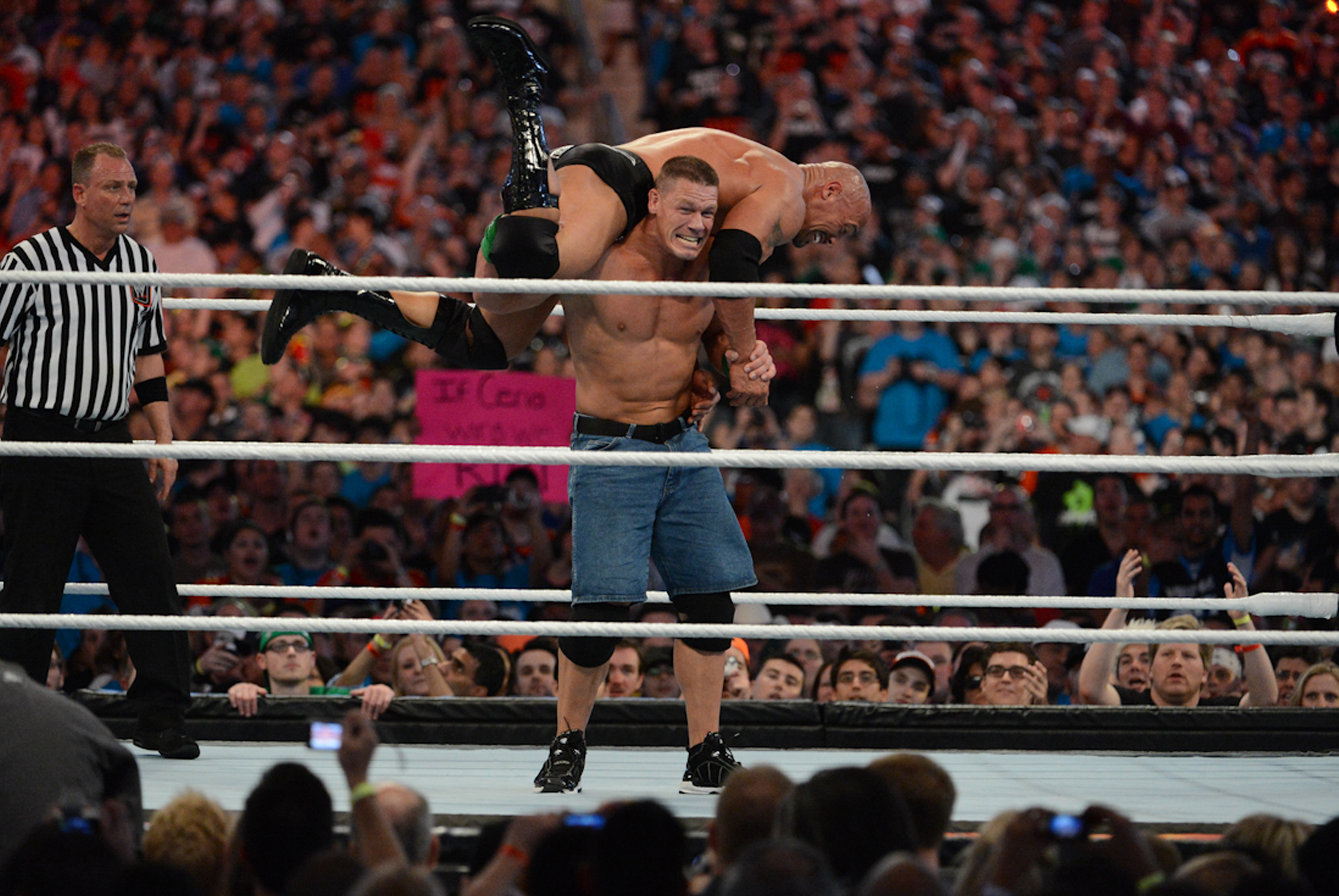
Early in his career, John Cena spent as much time rapping as he did wrestling, spitting “diss track”-quality rhymes to frustrate his opponents. Within a few years, a different Cena would emerge — a traditional “good guy,” more in the mold of Hulk Hogan than Marky Mark.
Adopting a mantra of “Hustle, Loyalty, Respect,” Cena became the poster boy for both WWE’s “Ruthless Aggression” era and “PG” era (as in rated PG).
Cena’s run as the “Face that Runs the Place” lasted over a decade. In that time, Cena would rack up a record-tying 16 WWE world championship reigns. He also committed himself to charity work, granting a record 600 wishes for the Make-A-Wish Foundation.
12. Trish Stratus
Trish Stratus began her career at a time when women’s wrestling existed as a way to sneak some T and A into the show. In fact, her first role on WWE TV was as a valet for a leather-clad tag team called, well, “T & A.” Over the course of her seven-year run, Stratus would transcend that role, becoming a then-record seven-time women’s champion.
Her battles with rival and sometime partner Lita set the tone for women’s wrestling at the time. The two were the first women to wrestle in the main event of WWE’s flagship show, Monday Night Raw. The WWE Hall of Famer is often cited as an inspiration to WWE’s current crop of female superstars.
11. Mr. McMahon
It is said that in order to create a great babyface (good guy), you need a great heel (bad guy). In the late 1990s, there was no greater heel than Mr. McMahon. Ratcheting up his own persona several notches, WWE owner Vince McMahon would take advantage of the notoriety afforded him by real-life scandals and become the company’s lead antagonist.
The Boss was not above getting in the ring himself, either. McMahon’s battles with “Stone Cold” Steve Austin helped propel the latter to superstardom, while drawing huge ratings, and propelled the struggling company into its most successful period ever.
10. Triple H
After Mr. McMahon himself, “The Game” Triple H reigned as the top heel of the WWE’s “Attitude” era. As leader of the troublemaking faction known as D-Generation X, and later in the Armani-suit-clad group Evolution, Triple H established himself as a ruthless and brutal baddie. Not satisfied with pinning an opponent, Triple H often resorted to his trusty sledgehammer (somehow always stashed underneath the ring) to finish the job.
Today, Paul Levesque is the Vice President of Talent, Live Events and Creative for WWE. Under his watch, the WWE has created a thriving developmental brand known as NXT. He is still semi-active on WWE TV, playing the dual role of mentor to young talent on NXT and tormentor of all talent on Monday Night Raw.
9. Shawn Michaels
“The Heartbreak Kid” began his WWE run in neon spandex and a feathered mullet, as part of a team called The Rockers.
It was the ’80s, mind you.
After a successful run with The Rockers as tag team champions, Michaels set out on his own. He adopted the “Heartbreak” moniker, kept the mullet (for a while, at least) and obnoxiously recorded his own theme music. It was this newfound “attitude” and his athletic ring work that set the tone for the company in the years to come.
As a co-founder of D-Generation X, Michaels found himself in memorable feuds with Steve Austin, The Undertaker and even boxing star Mike Tyson. Michaels captured multiple world championships before taking several years off due to injuries. He returned to the company in 2002 for one last run that lasted until his retirement in 2010.
8. The Undertaker
When the lights go out in a WWE arena, it doesn’t mean they blew a fuse. It means you are moments away from an appearance by The Undertaker.
“The Deadman” has captivated audiences since his 1990 debut. The nearly 7-foot man proved an agile and nimble performer, unlike other giants of the time. His physical feats even earned him another nickname: “The Phenom.”
Over time, the Undertaker character evolved from an Old West mortician to a goth-inspired lord of darkness to a motorcycle-riding badass. Beginning in 1991, The Undertaker embarked on a 21-match winning streak at WrestleMania. Though he missed a few events due to injury, the streak lasted until 2014, when The Undertaker was defeated by Brock Lesnar. Still active, though reclusive, The Undertaker has locked horns with nearly every superstar on this list.
7. Randy Savage
The “Macho Man” Randy Savage debuted in 1985 and was treated as a big deal right away. The WWE portrayed Savage as a hot free agent with several of the company’s top managers, including Bobby Heenan, vying to represent him. He ultimately chose a newcomer, Ms. Elizabeth, who also happened to be his real-life wife, thus beginning an iconic in-ring pairing that would eventually lead to their wedding — live on pay-per-view.
In terms of wrestling, few could top Savage’s technical prowess. Savage may be most remembered for his quick-tempered, narcissistic persona and flamboyant ring gear — not to mention his often rambling, though no less impassioned, jazz-style promo work. To quote one such speech, the two-time world champion may just have been the “cream of the crop.”
6. André The Giant
André the Giant was already a star by the time he appeared on Saturday morning television. Clocking in at 7 feet, 4 inches tall and over 500 pounds, André was one of the most popular wrestling attractions in the world.
André was portrayed as a gentle giant, often prodded into confrontation by heels such as John Studd. That changed in 1987 when he turned heel in order to challenge Hulk Hogan for the world championship at WrestleMania III. Billed as the “irresistible force meets the immovable object,” the WWE spent months building the match.
In terms of box office receipts and media attention, the record-setting event marked a turning point for the entire wrestling industry. Sadly, André’s physical health was already deteriorating. The Giant would retire just a few years later. When he passed in 1993, the WWE made André the first inductee in their Hall of Fame.
5. Bret Hart
Declaring himself the “best there is, best there was, best there ever will be,” Bret Hart was uniquely suited to back it up. Trained alongside his brother Owen in the family “Dungeon,” Bret was in fact regarded as one of the greatest technical wrestlers of all time. Deemed the heir apparent in the post-Hulk Hogan era of WWE, Hart would capture the world championship five times.
Despite his successes, Hart may most be remembered for the “Montreal Screw Job,” wherein a real-life contract dispute with WWE owner Vince McMahon spilled into the ring. During a championship match with Shawn Michaels, Vince would force a timekeeper to end the match prematurely, handing Michaels the victory even though Hart was under the impression he was going to win the encounter. The incident prompted the creation of the “Mr. McMahon” character and was arguably the origin of the company’s hugely popular “Attitude” era.
Hart would go on to leave the WWE, but would return years later to be inducted into the Hall of Fame — but not before wrestling McMahon to settle the score.
4. Bruno Sammartino
Bruno Sammartino may be the biggest wrestling star you’ve never heard of. In the days before WWE ran weekly TV shows and internet-streaming services, they almost exclusively ran live shows. For WWE, that meant New York’s Madison Square Garden. There, Bruno Sammartino is credited with selling out the arena more than anyone not named Billy Joel.
The “Italian Strongman” would hold the heavyweight championship for an astounding eight years. In the years since, Sammartino had multiple fallings out with the company. Lawsuits over earnings and Sammartino’s disinterest in the raunchier content produced in the ’90s meant Sammartino’s contributions went largely ignored.
That changed in 2013 when he was inducted into the WWE Hall of Fame. In the years before his passing, Sammartino made appearances at WWE events, signings and even in video games.
3. The Rock
Before The Rock was the biggest movie star on the planet, he was the biggest wrestling star in the WWE universe.
He didn’t start that way, though. Taking his name from his wrestler father Rocky Johnson and grandfather Peter Maivia, Rocky Maivia was booed mercilessly upon his debut. A change of name and attitude turned The Rock into a trash-talking, smackdown-laying bad guy who would enthrall fans for years.
The Rock won 10 world championships in his career while parlaying his popularity into Hollywood success. The Rock became the first WWE star to host “Saturday Night Live,” and like Hulk Hogan before him, he began toplining films. Unlike Hogan, The Rock has been able to sustain his acting career, which to date has netted millions (Rock voice: “Annnnd millions!”) in box office receipts.
2. Hulk Hogan
It is impossible to imagine the WWE being what it is today without Hulk Hogan. Hogan encouraged millions of his “Hulkamaniacs” to say their prayers and eat their vitamins while putting the boot to baddies like the Iron Sheik and Roddy Piper.
Hogan was at the forefront of WWE’s first boom period, notably via the “Rock and Wrestling Connection” which propelled the first WrestleMania to mainstream success. Hogan, alongside pop singer Cyndi Lauper and “A-Team” star Mr. T, would appear regularly on MTV, which in 1985 was a huge deal. In that time Hogan held the world championship for four years (today, many reigns last no longer than a few months).
Hogan also achieved some success outside of wrestling, appearing in mostly B-movies such as “Santa With Muscles” and the cult hit “No Holds Barred.” In recent years, Hulk faced a conduct-related ban from the company when video surfaced of Hogan using racist language. Hogan has since apologized, but the incident remains a black mark on a man some still consider a hero.
1. Steve Austin
In the late ’90s, few sounds could elicit as enormous a response as that of shattered glass. That meant “Stone Cold” Steve Austin was sauntering to the ring to “open up a can of whoop-ass” (and likely a few celebratory beers, too).
Unlike the hokey, cartoonish good guys of the ’80s, Austin came across as an authentic, anti-authority brawler — the perfect character to counter the emerging authority figure in Mr. McMahon. The WWE’s target demographic at the time was young males who no doubt saw themselves in Stone Cold. Who wouldn’t want to flip off their boss and ride off on a four-wheeler?
Austin’s battles with McMahon, Shawn Michaels and The Undertaker launched WWE into its most lucrative period. Injury shortened Austin’s run at the top, however, and persistent neck issues forced him to retire in 2003. In the years that followed his ascendance, WWE would become a publicly-traded company nearing a billion dollars in revenue.
“And that’s the bottom line, because Stone Cold said so!”
Sponsored Content

